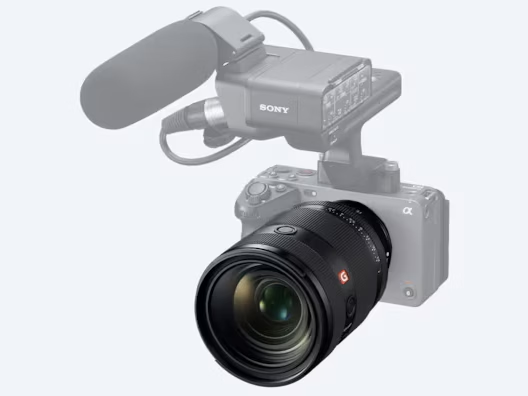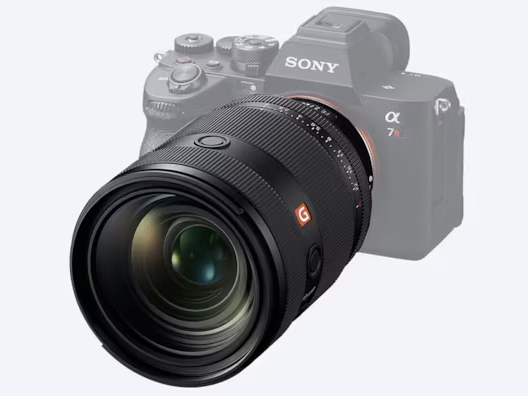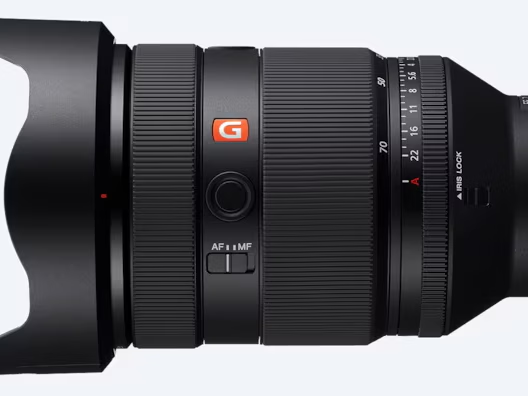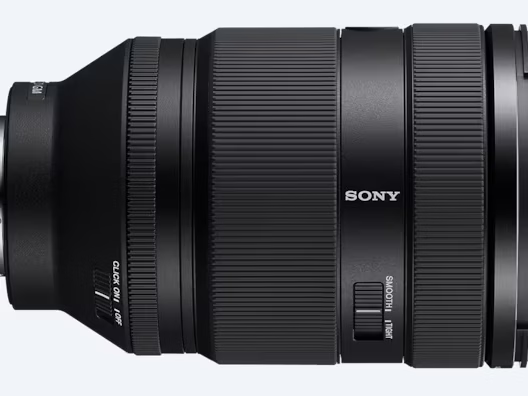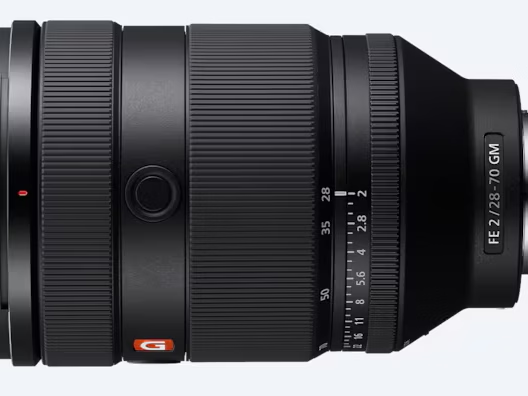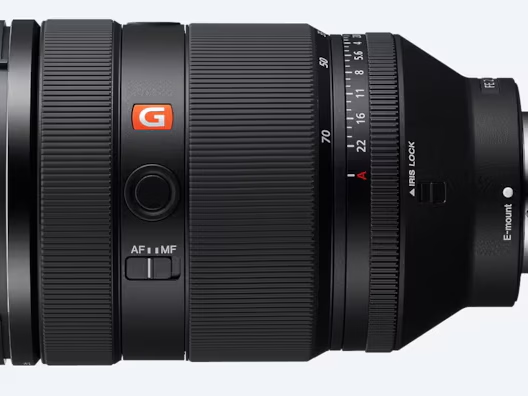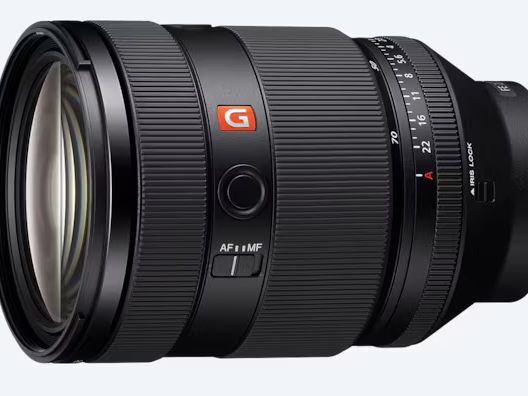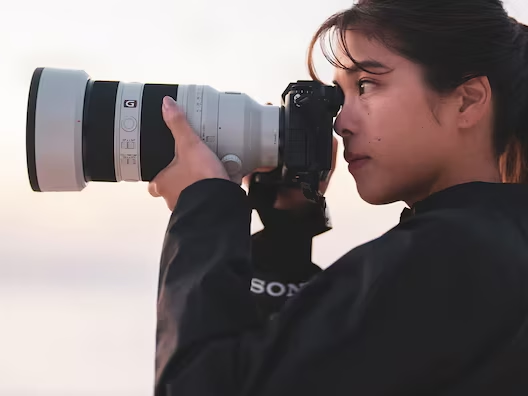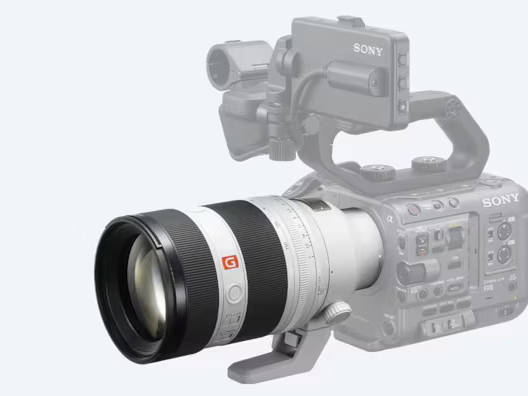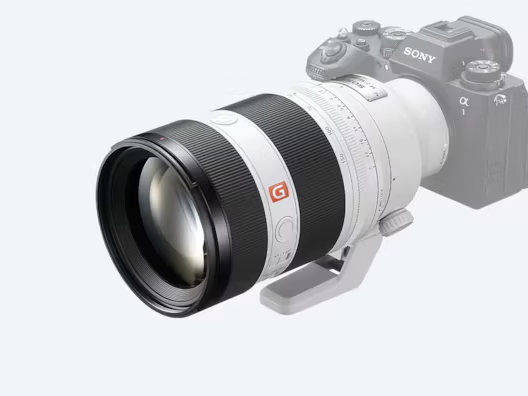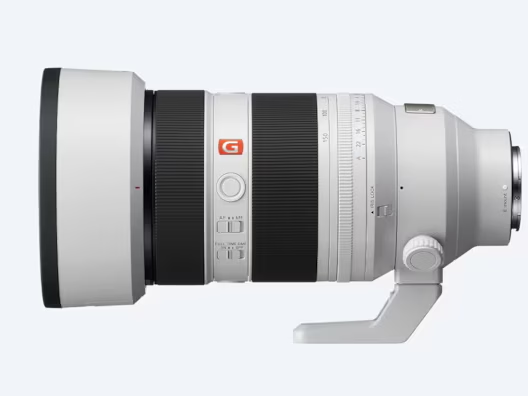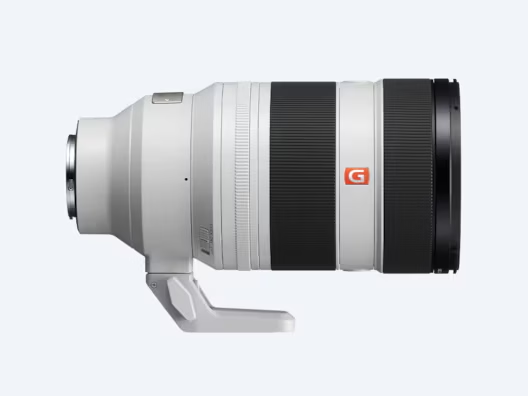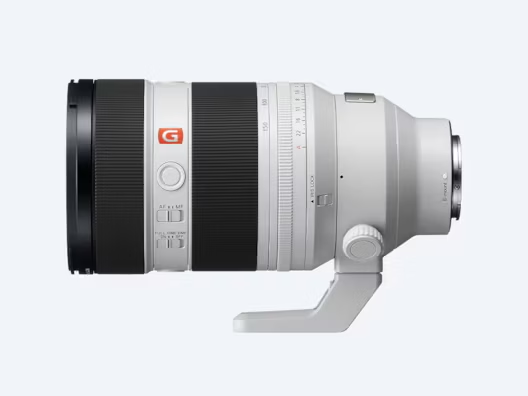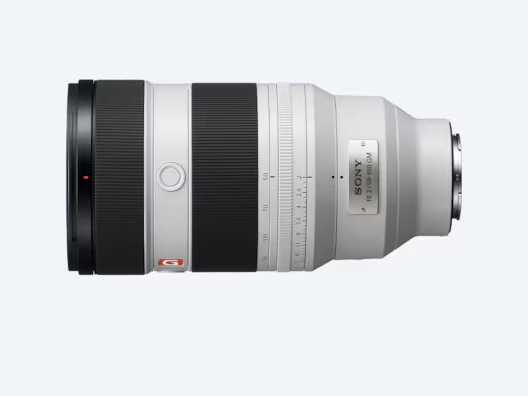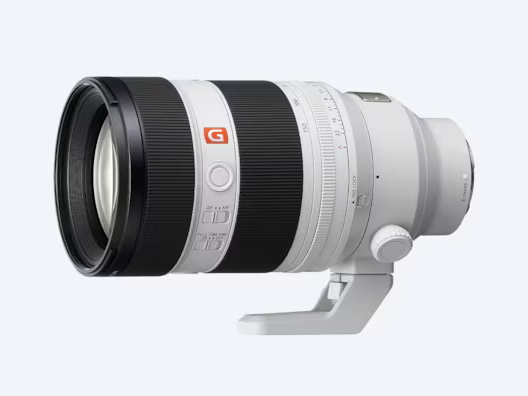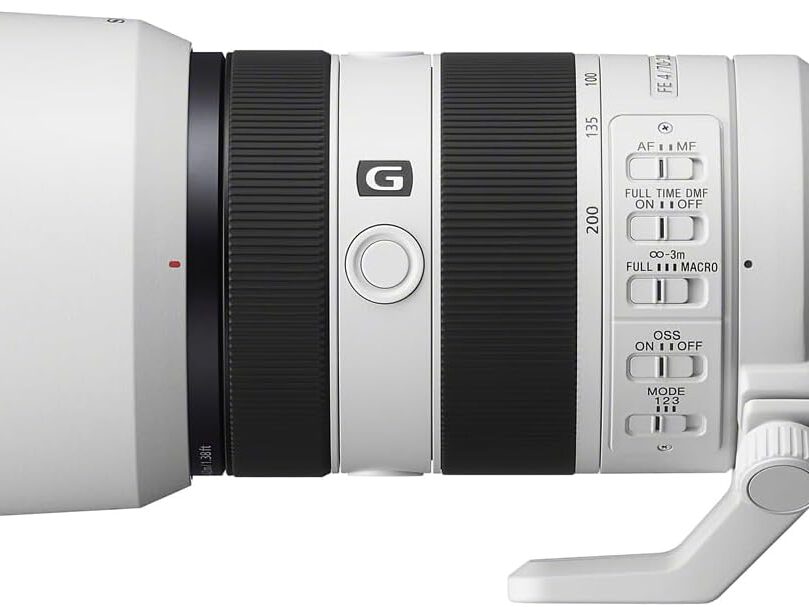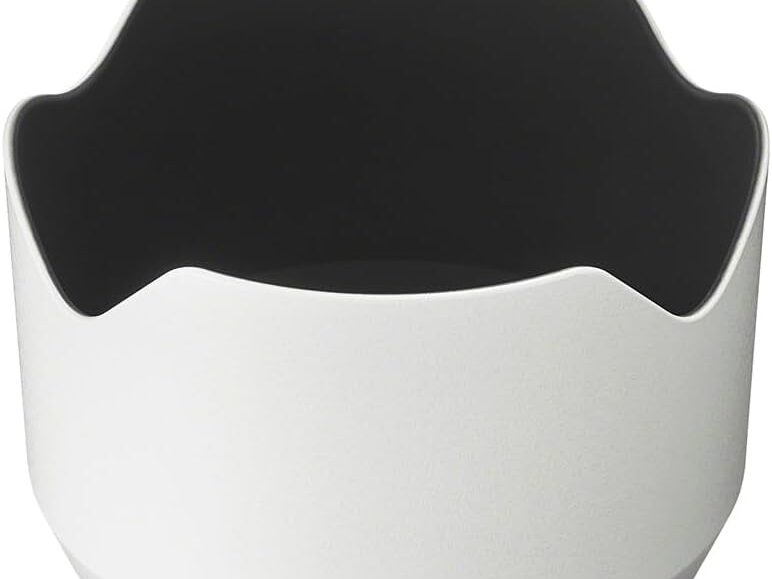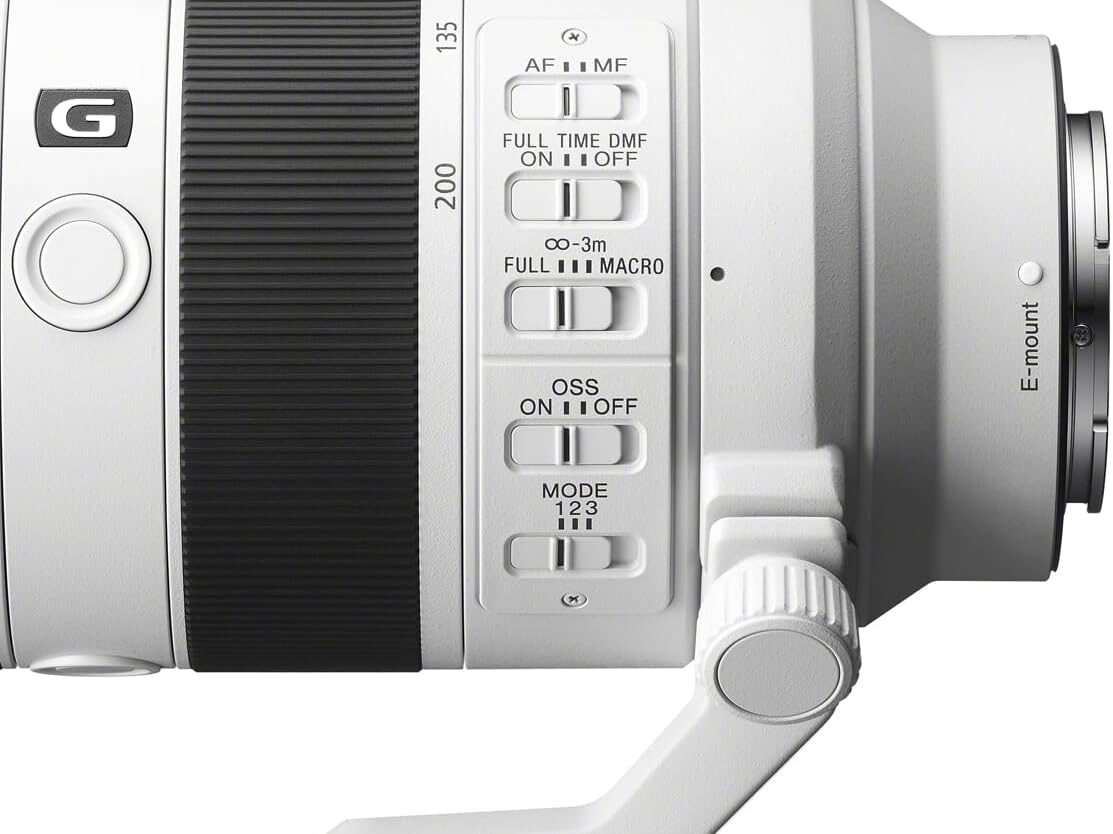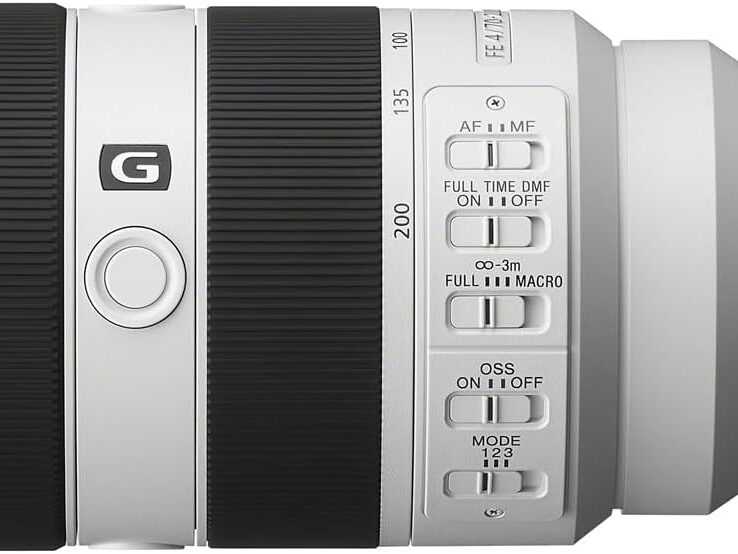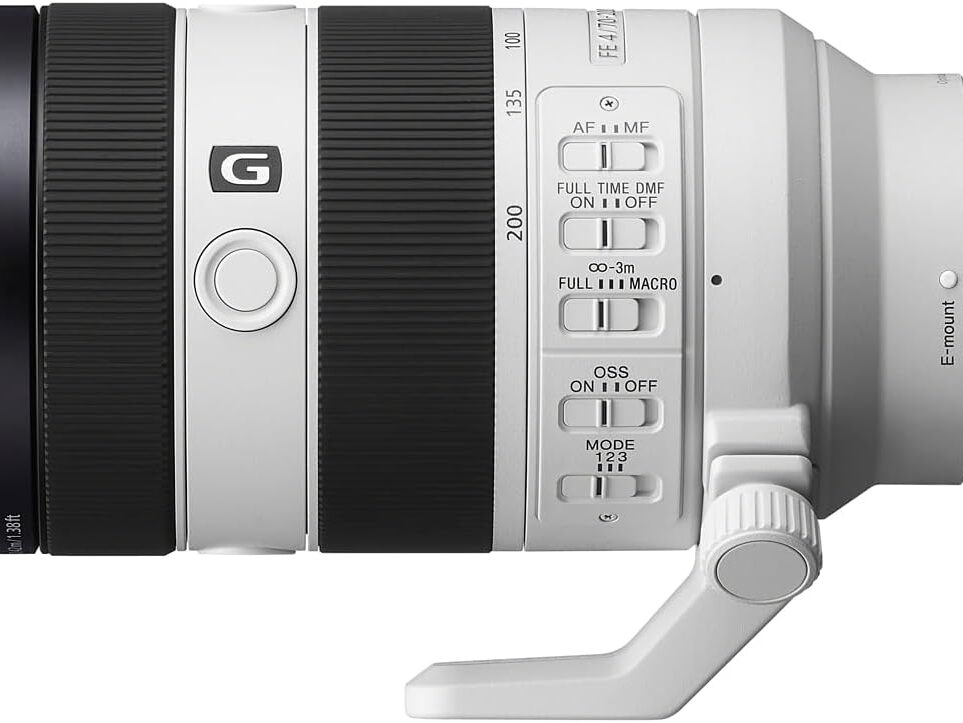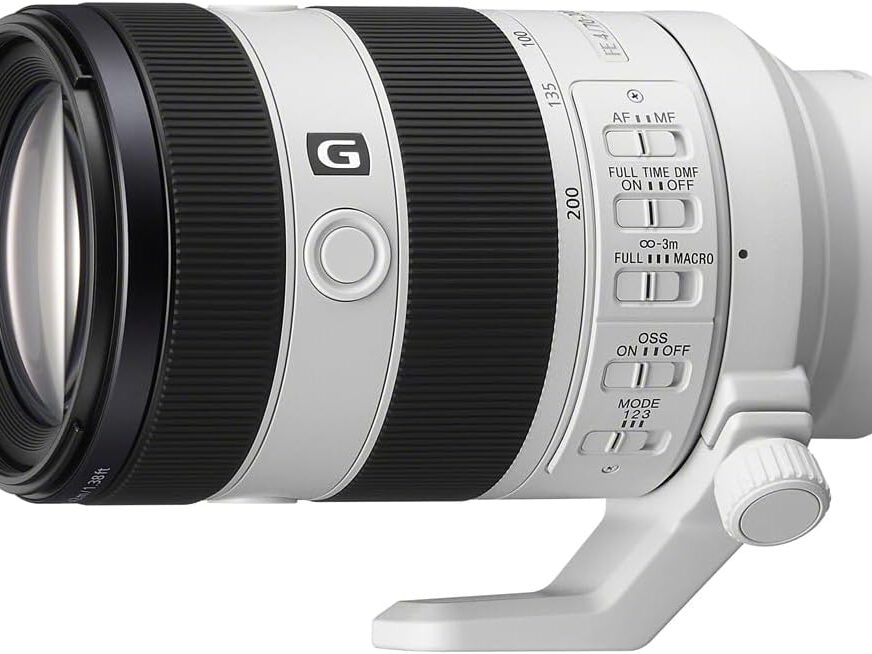Making my blog more accessible is important to me. For readers who find the detailed text descriptions challenging, I've begun adding audio descriptions in a conversational format. I hope this offers a richer and more inclusive experience
THE SONY FE 28-70MM F2 GM LENS RATHER THAN THE 24-70 F2.8 GM II
ORDERED APRIL 2025
My favourite Sony lens was the original FE 24-70 GM F2.8 but it has reached the end of life so I had to decide between getting the new version or the 28-70 F2 and I am now awaiting delivery.
Analysis and Comparison: Sony FE 28-70mm F2 GM vs Sony FE 24-70mm F2.8 GM II
- Introduction: A New Benchmark in Standard Zooms?
Sony’s G Master (GM) lens line-up represents the pinnacle of its optical engineering, consistently pushing boundaries in resolution, bokeh quality, and autofocus performance. Within this prestigious family, the introduction of the Sony FE 28-70mm F2 GM marks a significant development – Sony’s first constant F2 aperture standard zoom lens for its full-frame E-mount system. This lens is positioned not merely as another high-quality zoom, but as a tool engineered to deliver performance characteristics often associated with prime lenses, packaged within the versatility of a zoom format. It targets demanding professional photographers and videographers, along with serious enthusiasts, who require exceptional low-light capability and depth-of-field control.
The FE 28-70mm F2 GM enters a niche but demanding market segment, directly challenging the established Canon RF 28-70mm F2 L USM, a lens that garnered significant attention upon its release. However, Sony’s approach is distinct, notably achieving a comparable specification while significantly reducing the size and, more dramatically, the weight compared to its Canon counterpart – a point Sony actively highlights.
This blog post provides a comprehensive analysis of the Sony FE 28-70mm F2 GM. It delves into a detailed comparison with its highly acclaimed sibling, the FE 24-70mm F2.8 GM II , synthesises findings from professional reviews to identify strengths and weaknesses , examines the factors contributing to its substantial price tag , and assesses the necessity of pairing it with Sony’s flagship camera bodies like the Alpha 1 II or Alpha 9 III.
The launch of this lens, closely followed by the announcement of the FE 50-150mm F2 GM , suggests a deliberate strategic direction from Sony. These ultra-fast zooms appear aimed at offering professionals, particularly those covering events, weddings, or portraits , a compelling alternative to carrying a bag full of fast prime lenses. This strategy attempts to redefine workflows by combining the aperture benefits of primes with the flexibility of zooms, targeting situations where speed and adaptability are paramount.
- The Contenders: Specifications and Core Attributes
Understanding the nuances between the FE 28-70mm F2 GM and the FE 24-70mm F2.8 GM II requires a close look at their respective specifications and design philosophies.
2.1 Sony FE 28-70mm F2 GM: The F2 Pioneer
This lens establishes a new category within Sony’s E-mount system. Its defining characteristic is the constant F2 maximum aperture throughout its 28mm to 70mm focal range, extending down to a minimum aperture of F22. As a G Master lens, it carries the expectation of Sony’s highest standards in optical resolution, bokeh aesthetics, autofocus speed, and overall build quality.
The optical construction is necessarily complex to achieve the F2 aperture while maintaining image quality. It comprises 20 elements arranged in 14 groups, incorporating a significant number of specialised glass types: three XA (extreme aspherical), three standard aspherical, three Super ED (extra-low dispersion), and one ED element. This sophisticated design aims to meticulously control various optical aberrations, including chromatic aberration and spherical aberration, ensuring high sharpness from corner to corner, even when shooting wide open at F2. Sony’s Nano AR Coating II is applied to minimise flare and ghosting, particularly in challenging backlit situations , while a fluorine coating on the front element helps repel water, oil, and contaminants.
Autofocus is driven by a powerful system employing four of Sony’s XD (extreme dynamic) Linear Motors. These motors work in conjunction with a floating focus mechanism, designed to deliver fast, precise, and near-silent autofocus performance. This system is engineered to keep pace with the high-speed continuous shooting capabilities of modern Sony bodies (up to 120fps compatibility mentioned) and demanding video applications. Focusing occurs internally, meaning the lens’s physical length does not change during focusing.
Handling is enhanced by a suite of professional controls. A dedicated aperture ring provides tactile control and can be de-clicked for smooth, silent iris adjustments during video recording, complete with an iris lock switch. Unique to this class of lens is a zoom smoothness switch, allowing adjustment between ‘Smooth’ and ‘Tight’ torque settings for the zoom ring. Two customisable focus hold buttons are provided for easy access in different orientations , and Linear Response MF ensures predictable manual focus adjustments.
Physically, the lens weighs 918 grams (approximately 2.02 lb or 32.4 oz) and measures 92.9mm in diameter by 139.8mm in length (approximately 3.7 x 5.5 inches). It utilises an 86mm front filter thread. While it employs an external zoom mechanism, the lens barrel extends by only about 18mm (0.7 inches) when zooming from 28mm to 70mm, minimising shifts in balance. The construction incorporates dust and moisture resistance for reliability in challenging environments.
The minimum focusing distance is a constant 0.38 metres (1.25 feet) throughout the zoom range, yielding a maximum magnification ratio of 0.23x at the 70mm setting. Bokeh quality is addressed by a newly designed 11-blade circular aperture diaphragm, intended to produce smooth, aesthetically pleasing background blur.
2.2 Sony FE 24-70mm F2.8 GM II: The Refined Workhorse
The FE 24-70mm F2.8 GM II represents the evolution of Sony’s professional standard zoom. As a “Mark II” iteration, it builds upon the success of the original GM version, incorporating significant improvements primarily focused on reducing size and weight while enhancing optical and autofocus performance. It covers the classic 24-70mm focal range with a constant F2.8 maximum aperture (minimum F22).
Its optical formula consists of 20 elements in 15 groups, also featuring advanced elements like XA, ED, and Super ED glass to ensure high resolution and effectively suppress aberrations. Nano AR Coating II is employed here as well to combat flare and ghosting.
Mirroring the F2 GM, the autofocus system relies on four XD Linear Motors and a floating focus mechanism. This ensures comparable high-speed, precise, and quiet AF capabilities, suitable for both demanding stills (compatibility up to 30fps mentioned) and video work.
Handling controls are very similar to the F2 GM, featuring a de-clickable aperture ring with lock, an adjustable zoom smoothness switch (Tight/Smooth), two customisable focus hold buttons, and an AF/MF switch.
The most striking difference lies in its physical dimensions. The F2.8 GM II is substantially lighter and more compact, weighing just 695 grams (approximately 1.5 lb or 24.5 oz) and measuring 87.8mm in diameter by 119.9mm in length (approximately 3.5 x 4.7 inches). This represents a weight reduction of over 20% and a volume reduction of around 18% compared to the original 24-70mm F2.8 GM. It uses a more common 82mm filter thread. However, unlike the F2 GM, its barrel extends considerably during zooming – approximately 33.3mm (1.31 inches) from 24mm to 70mm. Dust and moisture resistance are also integral to its design.
This lens offers superior close-focusing capabilities, with a minimum focus distance of just 0.21 metres (8.3 inches) at 24mm and 0.30 metres (11.8 inches) at 70mm. This results in a higher maximum magnification ratio of 0.32x. Like the F2 GM, it features an 11-blade rounded diaphragm for smooth bokeh rendering.
- Performance Showdown: F2 Aperture vs F2.8 Versatility
Comparing these two G Master lenses reveals a fundamental trade-off between the unique capabilities of the F2 aperture and the established versatility of the F2.8 standard zoom.
3.1 The Defining Trade-off: Light Gathering & DOF vs Wider View
The core distinction lies in the maximum aperture. The FE 28-70mm F2 GM’s F2 aperture gathers precisely twice the amount of light compared to the F2.8 aperture of the GM II model – a full one-stop advantage. This translates directly into practical benefits, particularly in low-light environments. Photographers can utilise lower ISO sensitivities for cleaner images, or employ faster shutter speeds to freeze motion, compared to what is possible at F2.8 under the same lighting conditions. Furthermore, the F2 aperture enables a significantly shallower depth of field, allowing for more pronounced subject isolation and background blur, mimicking the aesthetic often sought with fast prime lenses.
Conversely, the FE 24-70mm F2.8 GM II holds a distinct advantage at the wider end of the focal range, offering a 24mm perspective compared to the F2 GM’s 28mm starting point. While seemingly small, this 4mm difference provides a substantially wider field of view. This wider perspective is often crucial for landscape photography, architectural work, interior shots, and certain styles of event or street photography where capturing more of the scene is necessary.
This fundamental difference shapes the ideal use case for each lens. The choice extends beyond a simple technical specification (F2 vs F2.8) to influence creative potential and suitability for specific photographic disciplines. The F2 GM leans towards applications where subject separation and low-light performance are paramount, such as portraiture, weddings, and dimly lit events. In contrast, the F2.8 GM II, with its wider 24mm reach and more manageable size, remains the more flexible, all-purpose standard zoom, better suited for general professional use where versatility across various scenarios is key. The decision reflects a prioritisation between these distinct advantages.
3.2 Image Quality Analysis
Both lenses bear the G Master designation, signifying Sony’s commitment to exceptional image quality.
Sharpness: The FE 28-70mm F2 GM is marketed as delivering sharpness rivalling prime lenses, maintaining high resolution across the frame, even when used wide open at F2. Independent lab tests generally corroborate this, showing excellent to outstanding central sharpness throughout the zoom range at F2. Edge performance is also typically excellent, though some tests suggest a slight decrease in edge sharpness specifically at 70mm F2 compared to the centre, albeit often considered minor in real-world use. The FE 24-70mm F2.8 GM II is similarly lauded for its optical prowess, widely regarded as a significant improvement over its predecessor and highly competitive with prime lenses in terms of sharpness.
Bokeh: Both lenses utilise an 11-blade rounded aperture diaphragm designed to produce smooth, circular bokeh. Naturally, the F2 GM’s wider maximum aperture provides inherently greater potential for achieving shallow depth of field and significant background blur. However, a point of critique raised in some reviews concerns the potential for “onion ring” patterns within the bokeh balls of the F2 GM under specific conditions, despite the inclusion of XA elements intended to suppress such artefacts. The F2.8 GM II is also generally praised for its pleasing bokeh rendering.
Aberrations & Flare: Both lenses incorporate ED and Super ED glass elements to effectively minimise chromatic aberrations (colour fringing). Reviews indicate the F2 GM manages CA very effectively. Both employ Nano AR Coating II for robust flare and ghosting suppression , with the F2 GM noted for its high resistance. Geometric distortion is present in the F2 GM, exhibiting barrel distortion at 28mm and transitioning to pincushion distortion towards 70mm, though this is readily correctable via lens profiles. The F2.8 GM II exhibits similar correctable distortion patterns.
While both lenses achieve the high optical standards expected of the GM line, the ambitious goal of a constant F2 aperture in the 28-70mm GM might introduce subtle optical compromises compared to the more conventional, highly refined F2.8 design. The potential for occasional bokeh artefacts or the minor dip in edge sharpness at the extreme telephoto end wide open could be seen as consequences of pushing the optical envelope. The FE 24-70mm F2.8 GM II, benefiting from being a second-generation refinement of a standard F2.8 formula, may represent a more consistently flawless optical performance across all metrics, albeit without the headline F2 aperture. Achieving F2 in a zoom presents significant optical challenges , making minor trade-offs plausible.
3.3 Autofocus Capabilities
Both the FE 28-70mm F2 GM and the FE 24-70mm F2.8 GM II are equipped with Sony’s most advanced autofocus hardware: four XD Linear Motors driving floating focus groups. This configuration is engineered for top-tier autofocus performance – characterised by exceptional speed, high precision, quiet operation, and tenacious subject tracking, making both lenses suitable for demanding applications like sports photography, event coverage, and professional video production.
Both lenses are explicitly marketed as being compatible with the high frame rate shooting capabilities of advanced Sony Alpha bodies. The F2 GM is stated to support AF tracking up to 120fps on compatible cameras like the A9 III , while the F2.8 GM II is mentioned with compatibility up to 30fps, though likely capable of higher speeds depending on the camera body.
Professional reviews consistently affirm the excellent autofocus performance of both lenses. They are described as fast, accurate, silent, and reliable in tracking subjects.
Given that both lenses employ the same number and type of high-end autofocus motors and floating focus mechanisms , and are both marketed for high-speed compatibility , their autofocus capabilities appear largely equivalent based on specifications and review consensus. Any perceptible difference in real-world autofocus performance is likely to be minimal or more dependent on the specific camera body’s processing power and algorithms rather than an inherent advantage of one lens over the other. Therefore, the choice between these two lenses should likely not hinge significantly on anticipated differences in autofocus speed or accuracy.
3.4 Suitability for Videography
Both the F2 GM and F2.8 GM II are explicitly designed with hybrid shooters in mind, incorporating features beneficial for video production.
Shared key video features include the quiet operation of the XD Linear Motors, crucial for clean audio capture during autofocus ; the de-clickable aperture ring allowing for smooth, stepless iris adjustments ; and the Linear Response Manual Focus (MF) for consistent, repeatable focus pulls.
Focus breathing (the slight change in focal length when adjusting focus) is minimised in both designs. The F2 GM is particularly noted for its excellent control of focus breathing, potentially being parfocal (maintaining focus during zoom), and supports in-camera breathing compensation on compatible bodies. The F2.8 GM II also features reduced breathing and supports compensation.
Where the F2 GM gains a slight edge for certain video workflows is in its physical handling characteristics. Its minimal zoom extension (approx. 18mm or 0.7 inches) helps maintain the camera setup’s centre of gravity when mounted on a gimbal, offering better stability compared to the F2.8 GM II, which extends significantly more (approx. 33.3mm or 1.31 inches). Additionally, the F2 GM’s adjustable zoom smoothness switch could potentially aid videographers in achieving smoother, more controlled manual zoom movements. Naturally, the F2 aperture also provides greater creative latitude for controlling depth of field in cinematic productions.
While both lenses are highly competent tools for video, the FE 28-70mm F2 GM presents tangible advantages for videographers frequently using gimbals, performing manual zooms, or requiring the utmost control over shallow depth of field, stemming from its near-internal zoom behaviour, adjustable zoom torque, and wider maximum aperture.
3.5 Ergonomics: Size, Weight, and Handling
The difference in physical size and weight is one of the most significant practical distinctions between these two lenses. The FE 28-70mm F2 GM weighs 918g and is 139.8mm long , while the FE 24-70mm F2.8 GM II comes in at 695g and 119.9mm long. This makes the F2 GM approximately 32% heavier and noticeably longer, as well as wider (indicated by its larger 86mm filter thread compared to the F2.8 GM II’s 82mm).
It is important to contextualise the F2 GM’s dimensions. While undeniably large and heavy compared to standard F2.8 zooms , it is frequently described as relatively compact and lightweight specifically for an F2 standard zoom, particularly when compared against the Canon RF 28-70mm F2 which weighs a substantial 1430g. Some reviewers and users found the F2 GM’s weight manageable for handheld shooting, even over extended periods , attributing this partly to good balance with weight concentrated towards the rear. Others, however, perceived its bulk as prohibitive for regular use.
The FE 24-70mm F2.8 GM II, conversely, leverages its significantly reduced size and weight as a major selling point. Being roughly 18-22% smaller and lighter than its own predecessor , it offers substantially better portability and handling ease, making it less fatiguing to carry and use throughout a long shooting day.
The difference in filter thread size also has practical implications. The 86mm filters required for the F2 GM are less common and generally more expensive than the widely available 82mm filters used by the F2.8 GM II. This can add a considerable hidden cost for photographers who regularly use filters like polarisers, neutral density, or diffusion filters.
Ultimately, the ergonomic disparity represents a critical decision point, second only to the aperture/focal range trade-off. The F2.8 GM II holds a clear advantage for users prioritising portability, ease of handling, travel convenience, or pairing with smaller camera bodies. Choosing the F2 GM necessitates accepting its considerable bulk as an unavoidable consequence of its unique F2 aperture. This choice directly reflects user priorities and tolerance for carrying heavier, larger equipment.
- Expert Consensus: Professional Review Insights on the FE 28-70mm F2 GM
Synthesising opinions from various professional reviews provides a clear picture of the FE 28-70mm F2 GM’s reception in the industry.
4.1 Acclaimed Strengths
Optical Performance: The lens receives widespread acclaim for its exceptional sharpness, frequently drawing comparisons to high-quality prime lenses, even when used wide open at its F2 maximum aperture across most of the zoom range. Control over chromatic aberrations is rated as excellent , and its resistance to flare and ghosting, aided by the Nano AR Coating II, is consistently praised. The quality of the bokeh produced is often described as beautiful and smooth, a key attribute for a lens with such a wide aperture.
F2 Aperture Advantage: The constant F2 aperture is universally recognised as the lens’s defining feature. It is lauded for the significant advantages it offers in low-light shooting scenarios and for the enhanced control over depth of field it provides, enabling greater subject separation. This is viewed as a genuine, tangible benefit over standard F2.8 zooms for specific photographic applications.
Autofocus: The implementation of four XD Linear Motors results in an autofocus system that is consistently described as fast, highly accurate, exceptionally quiet, and reliable in tracking subjects. Its ability to keep pace with the high-speed burst modes of cameras like the A9 III is noted as a key strength for action or event photography.
Build and Handling Features: The lens exhibits the robust build quality expected of the G Master line, including comprehensive weather sealing for professional use in adverse conditions. The full suite of physical controls, including the de-clickable aperture ring with lock, the adjustable zoom smoothness switch, and the customisable focus hold buttons, is well-received for enhancing operational flexibility. While substantial, its size and weight are often acknowledged as being relatively well-managed for an F2 standard zoom. The minimal extension during zooming is also cited as a positive handling characteristic.
Video Capabilities: Features such as minimal focus breathing, quiet autofocus, the de-clickable aperture ring, and linear manual focus response position it as a highly capable tool for videography.
4.2 Identified Limitations and Criticisms
Price: The high cost of the lens is a recurring theme in nearly all reviews, identified as a major consideration and potential barrier to ownership for many photographers.
Size and Weight: Despite favourable comparisons to its direct Canon competitor, the lens is still significantly larger and heavier than typical F2.8 standard zooms. This impacts portability and can lead to handling fatigue for some users, particularly during long shooting sessions. Terms like “bulky” and “hefty” are frequently used.
Focal Range Limitation: The 28mm wide-end limitation, compared to the standard 24mm found on most professional zooms, is often cited as a drawback, reducing its versatility for applications requiring a wider field of view, such as landscape, architecture, or tight interior spaces.
Bokeh Imperfections: Contradicting the general praise for its bokeh and Sony’s marketing emphasis , some detailed reviews have noted the presence of visible “onion ring” patterns within out-of-focus highlights (bokeh balls) under certain challenging lighting conditions. This suggests the XA elements, while effective, may not completely eliminate this artefact in such a complex F2 zoom design.
Manual Focus Feel: At least one reviewer found the damping of the manual focus ring to be too light, lacking the tactile resistance preferred for precise, traditional manual focusing adjustments.
No Optical Stabilisation: The lens lacks built-in Optical SteadyShot (OSS) and relies entirely on the camera body’s in-body image stabilisation (IBIS). While common for modern Sony zooms, this is a factor for users with older or non-stabilised camera bodies.
Filter Size: The large 86mm filter thread necessitates potentially expensive and less common filters.
Zoom Ring Squeak: An isolated report mentioned a squeaking noise from the zoom ring on an early production sample, which was resolved upon replacement. While likely not widespread, it points to the potential for minor variations in complex mechanical assemblies.
The collective professional opinion positions the FE 28-70mm F2 GM as an optically exceptional lens, but one designed for a specific niche. Its considerable strengths directly cater to users who prioritise the F2 aperture’s benefits above all else. However, its substantial cost, size, weight, and the limitation at the wide end prevent it from being a universally recommended choice over the more balanced and versatile FE 24-70mm F2.8 GM II. The observation regarding bokeh imperfections suggests that even state-of-the-art optical designs face inherent challenges when pushing the boundaries of ultra-fast zoom lenses. It excels in its intended role but demands compromises in areas where the F2.8 GM II offers greater practicality.
- Making the Choice: Why Opt for the FE 28-70mm F2 GM?
The decision to choose the FE 28-70mm F2 GM over the highly capable FE 24-70mm F2.8 GM II hinges on specific needs and priorities where the F2 aperture provides a compelling, often decisive, advantage.
5.1 Scenarios Where F2 Offers a Decisive Advantage
Extreme Low Light Conditions: For photographers frequently working in environments with minimal available light – such as dimly lit wedding venues, concert halls, clubs, or certain photojournalistic assignments – the F2 aperture offers a critical one-stop advantage over F2.8. This allows for the use of lower ISO settings, resulting in cleaner images with less noise, or alternatively, faster shutter speeds to effectively freeze motion and prevent blur.
Maximum Subject Separation: In portraiture, wedding photography, and other creative fields, achieving a very shallow depth of field to isolate the subject from the background is often desired. The F2 aperture provides a level of background blur potential that is noticeably greater than F2.8, particularly at the longer end of the zoom range, more closely emulating the look of dedicated fast prime lenses. While F2.8 offers good separation, F2 takes it a step further.
Replacing Multiple Prime Lenses: For professionals who typically rely on a set of fast prime lenses covering the standard range (e.g., 28mm, 35mm, 50mm, 70mm, often in the F1.8 to F2.8 range), the FE 28-70mm F2 GM presents an opportunity to consolidate their kit into a single, versatile lens without a significant sacrifice in maximum aperture. This can streamline workflow during fast-paced events, reducing the need for frequent lens changes.
Videography Depth-of-Field Control: Videographers aiming for a shallow, cinematic depth of field will find the F2 aperture offers greater creative control compared to F2.8, allowing for more pronounced background separation and focus transitions.
5.2 Weighing the Trade-offs: Is F2 Worth the Cost and Compromise?
Choosing the F2 GM necessitates accepting its inherent trade-offs. The most significant are its considerably higher purchase price , its substantial increase in size and weight impacting portability and handling , and the sacrifice of the valuable 24mm wide-angle perspective.
The primary alternative, the FE 24-70mm F2.8 GM II, presents a compelling counter-argument. It delivers outstanding G Master optical and autofocus performance, offers the more versatile 24mm wide end, boasts significantly better portability due to its reduced size and weight, and comes at a substantially lower price point. For a large majority of photographers, the F2.8 aperture provides ample low-light capability and sufficient background blur potential for their needs.
Furthermore, the market offers strong third-party alternatives. The Sigma 28-45mm F1.8 DG DN Art provides an even wider maximum aperture (at least at the wider end of its more limited range) , while the Sigma 24-70mm F2.8 DG DN Art II is a highly regarded, lower-cost competitor to the Sony F2.8 GM II, offering excellent performance. It is worth noting, however, that Sony may restrict the maximum continuous autofocus speed of third-party lenses on certain high-speed camera bodies.
The decision ultimately pivots on whether the F2 aperture is a necessity driven by specific, demanding professional requirements, or simply a preference. If a user consistently operates in environments where every fraction of a stop of light counts (e.g., exceptionally dark wedding receptions) or requires the absolute shallowest depth of field achievable in a standard zoom for their signature style, then the F2 GM justifies its premium and compromises. However, if the excellent performance of an F2.8 zoom is generally sufficient, the FE 24-70mm F2.8 GM II offers a more practical, versatile, and economically sensible package for a wider range of users. The F2 GM functions as a specialist instrument, whereas the F2.8 GM II stands as the high-performance generalist.
- Deconstructing the Cost: Justifying the Premium Price Tag
The substantial price tag of the Sony FE 28-70mm F2 GM is a direct reflection of the ambitious engineering, advanced materials, and cutting-edge technology required to produce such a lens. Several factors contribute to its premium cost:
G Master Pedigree: Lenses designated as G Master represent Sony’s highest tier of optical and mechanical excellence. This involves significant investment in research and development, the use of premium materials, adherence to extremely tight manufacturing tolerances for optimal performance and consistency, and rigorous quality control – all contributing significantly to the final cost.
Optical Complexity: Designing a zoom lens that maintains a constant F2 maximum aperture across a standard focal range while delivering exceptional image quality corner-to-corner is an immense optical challenge. The F2 GM’s formula necessitates a large number of complex lens elements, including multiple costly, difficult-to-manufacture specialised glass types like XA (extreme aspherical), standard aspherical, Super ED, and ED elements. The sheer quantity and type of this exotic glass significantly drive up material and production expenses.
Advanced Autofocus System: The implementation of four powerful XD Linear Motors represents Sony’s flagship autofocus drive technology. This sophisticated system, capable of moving large, heavy focus groups quickly and precisely, adds considerably to the lens’s cost compared to simpler or fewer motor designs.
Mechanical Construction and Features: The lens features a robust build designed for professional durability, incorporating comprehensive dust and moisture sealing. Intricate mechanical features like the de-clickable aperture ring mechanism with its associated lock, and the novel adjustable zoom smoothness switch, add layers of complexity to the design and manufacturing process, further contributing to the cost.
Innovation and Market Positioning: As Sony’s first constant F2 standard zoom and a direct competitor in a high-performance, low-volume niche market segment , a premium is associated with the technological innovation and its positioning against the expensive Canon RF 28-70mm F2. Sony leverages its achievement of making the lens significantly lighter and smaller than the Canon offering as part of its value proposition, despite the high absolute price.
In essence, the high price is an unavoidable consequence of the lens’s ambitious design parameters – achieving constant F2 aperture with G Master image quality in a standard zoom format. This necessitates the use of cutting-edge, expensive optical components, Sony’s most powerful autofocus motors, sophisticated mechanical engineering, and robust construction, all while striving to maintain a relatively manageable size and weight compared to the competition. The price reflects the substantial investment required to overcome the inherent technical hurdles in creating such a specialised, high-performance lens.
- Synergy with High-End Bodies: A Necessity or Enhancement?
The question arises whether a lens like the FE 28-70mm F2 GM necessitates pairing with Sony’s top-tier camera bodies, such as the Alpha 1 II or Alpha 9 III, to realise its full potential.
Leveraging Advanced Autofocus: Flagship bodies like the A1 II and A9 III possess the most advanced processors and sophisticated autofocus algorithms within the Sony ecosystem. These capabilities are required to fully exploit the speed, precision, and tracking tenacity offered by the F2 GM’s four XD Linear Motors. Specifically, achieving the marketed 120 frames per second AF/AE tracking performance is only possible when the lens is mounted on a compatible high-speed body like the A9 III.
Handling and Balance: While the lens is compatible with any full-frame E-mount camera, its considerable size and weight (918g) will inevitably feel more balanced and ergonomically comfortable when paired with larger, professional-grade bodies like those in the Alpha 1 or Alpha 9 series. Using it on smaller bodies, such as the Alpha 7C series , might result in a front-heavy combination. Some users might find that adding a vertical grip to the camera body helps improve balance.
Is it Necessary?: From a purely optical standpoint, the FE 28-70mm F2 GM will deliver its fundamental advantages – the F2 aperture, high sharpness, and characteristic bokeh – on any compatible full-frame Sony E-mount camera. Excellent image quality is achievable even with older or less advanced bodies. However, users pairing the lens with mid-range or older bodies will not experience the absolute peak of its performance potential, particularly concerning autofocus speed, subject tracking responsiveness, and maximum continuous shooting rates.
Therefore, while pairing the FE 28-70mm F2 GM with a flagship body like the A1 II or A9 III is not strictly necessary to benefit from its core optical attributes , it is essential to unlock the lens’s maximum performance capabilities, especially those related to autofocus and high-speed shooting. Using a top-tier body acts as an enhancement, completing the high-performance ecosystem that Sony is cultivating for professionals working in demanding fields like sports, wildlife, and critical event coverage, where split-second responsiveness is paramount. The lens’s full potential is realised only when the camera body can keep pace with its advanced AF system.
- Conclusion: Tailoring the Lens to the Photographer
The Sony FE 28-70mm F2 GM stands as a remarkable achievement in optical engineering, offering an unprecedented constant F2 aperture within a standard zoom range for the E-mount system. It delivers exceptional sharpness, beautiful bokeh, and rapid autofocus, successfully embodying the G Master philosophy. Its primary strengths lie in its superb low-light performance and its ability to create significant subject separation, potentially allowing photographers to replace several fast prime lenses with a single, albeit substantial, zoom.
However, it exists alongside the equally impressive FE 24-70mm F2.8 GM II. This refined workhorse offers the more conventional, and often more useful, 24mm wide-angle perspective, significantly better portability due to its lighter weight and smaller size, and comes at a considerably lower price point, all while maintaining outstanding G Master image quality and performance.
The decision between these two exceptional lenses ultimately rests on the individual photographer’s specific needs, priorities, and budget.
Choose the Sony FE 28-70mm F2 GM if:
The absolute maximum low-light performance achievable in a standard zoom is a critical requirement for professional work (e.g., navigating extremely dim wedding venues or concert stages).
Achieving the shallowest possible depth of field for maximum subject isolation with the convenience of a zoom is a primary creative goal.
Consolidating a kit of fast primes (28mm, 35mm, 50mm, 70mm) into one lens is a key objective for workflow efficiency.
The budget accommodates the significant premium price.
The increased size and weight, and the lack of a 24mm focal length, are acceptable compromises for the F2 aperture advantage.
Videographers prioritising gimbal stability (due to minimal zoom extension) or maximum depth-of-field control will also find it advantageous.
Choose the Sony FE 24-70mm F2.8 GM II if:
All-around versatility, including the essential 24mm wide-angle view for landscapes, architecture, or group shots, is paramount.
Portability, reduced weight, and easier handling are significant factors for long shooting days or travel.
The excellent low-light performance and depth-of-field control offered by F2.8 are sufficient for the majority of shooting scenarios.
Budget is a key consideration, as it offers exceptional value within the premium zoom category.
It represents the benchmark high-performance, do-it-all standard zoom for most professional and enthusiast photographers.
In summary, the FE 28-70mm F2 GM is a specialised tool for those who demand the unique benefits of its F2 aperture and are willing to accept the associated costs and compromises. The FE 24-70mm F2.8 GM II remains the more practical, versatile, and accessible high-end standard zoom for a broader range of photographers.
Sony FE 28-70mm F2 GM, Sony FE 24-70mm F2.8 GM II, G Master lens, constant F2 zoom, standard zoom lens, Sony E-mount, full-frame lens, professional photography lens, low light photography, bokeh, depth of field, lens comparison, Sony A1 II, Sony A9III, XD Linear Motor, lens review, photography gear, videography lens, high-speed autofocus, lens sharpness, lens price, William Murphy, Infomatique, Photonique, April 2025, My Equipment,
SONY’S UNIQUE 50-150MM F2 LENS
I WAS NOT EXPECTING THIS UNTIL TOMORROW
I was aware of this lens but was under the impression that it would be announced 23 April 2025. I am awaiting a 28-70 F2 and the 70-200 GII F4 but I suspect that I will not be getting this particular lens as the retail price in Ireland is Euro 4399.00 and especially as it does not work with the Teleconverters.
Sony’s Audacious Gambit: An In-Depth Analysis of the FE 50-150mm F2 GM Lens
I. Introduction: Sony Redefines the Telephoto Zoom with the Groundbreaking FE 50-150mm F2 GM
Sony has once again pushed the boundaries of optical design with the introduction of its 80th E-mount lens, the FE 50-150mm F2 GM (SEL50150GM).
As the newest member of the esteemed G Master (GM) series, a lineup renowned for prioritising ultimate resolution and exquisite bokeh , this lens arrives with significant anticipation. It marks Sony’s second foray into constant F2 aperture zooms for full-frame mirrorless cameras, following the FE 28-70mm F2 GM launched in late 2024. This release signals a clear strategic direction from Sony, investing heavily in the development of ultra-fast zoom lenses previously thought impractical or impossible.
The FE 50-150mm F2 GM immediately distinguishes itself with a headline specification: it is the world’s first telephoto zoom lens for interchangeable lens cameras offering a maximum focal length of 150mm coupled with a constant F2 maximum aperture throughout its range. This represents a considerable feat of optical engineering and positions the lens as a unique proposition in the market. Sony and early commentators suggest it has the potential to be a “game-changer” for certain professionals, potentially replacing a kit of several fast prime lenses with a single, versatile optic.
This blog post aims to provide a comprehensive technical description of the Sony FE 50-150mm F2 GM, analyse its unique characteristics and market positioning through detailed comparisons, evaluate its expected performance based on released specifications and initial assessments, identify its intended target audience and primary applications, and offer an expert perspective on its potential impact within the professional imaging landscape.
II. The Sony FE 50-150mm F2 GM: Technical Specifications and Design Philosophy
Understanding the capabilities and intended purpose of the FE 50-150mm F2 GM begins with examining its core technical specifications and the design choices Sony has implemented.
Core Specifications Overview
Focal Length & Aperture: The lens offers a versatile 50mm to 150mm zoom range, covering standard to medium-telephoto perspectives. Its defining feature is the constant maximum aperture of F2 across this entire range, with a minimum aperture of F22. This constant F2 capability is significant, providing a full stop advantage in light gathering compared to the professional standard F2.8 telephoto zooms, enabling lower ISO settings or faster shutter speeds in challenging lighting conditions.
Optical Formula: The complex optical design comprises 19 elements arranged in 17 groups. Reflecting its G Master status, it incorporates a significant number of specialised elements to achieve high image quality: two XA (extreme aspherical), two standard aspherical, two Super ED (extra-low dispersion), and three ED glass elements. These elements work synergistically to effectively suppress various optical aberrations, including chromatic and spherical aberration, ensuring sharp, high-contrast images throughout the zoom range. Sony’s proprietary Nano AR Coating II is applied uniformly to element surfaces to significantly reduce internal reflections, minimising ghosting and flare, particularly in backlit situations.
Autofocus System: Autofocus is driven by four of Sony’s high-thrust XD (extreme dynamic) Linear Motors, coupled with advanced control algorithms. This sophisticated quad-motor system is engineered for extremely fast, precise, quiet, and powerful focus acquisition, capable of moving the large, complex focusing groups rapidly. It is designed to keep pace with demanding applications, including supporting continuous shooting up to 120 frames per second with full AF/AE tracking on Sony’s Alpha 9 III camera. A floating focusing mechanism is also employed to maintain image quality at all focusing distances.
Aperture Mechanism: A newly developed 11-blade circular aperture diaphragm is utilised. This design aims to produce exceptionally smooth and aesthetically pleasing bokeh (background blur), maintaining near-perfectly circular out-of-focus highlights, a hallmark characteristic of the G Master series.
Close Focus & Magnification: The lens features a minimum focusing distance of 0.4 metres (approximately 1.3 feet) at the 50mm wide end and 0.74 metres (approximately 2.4 feet) at the 150mm telephoto end. This results in a maximum magnification ratio of 0.20x across the zoom range. While useful for moderately tight shots, this magnification does not classify the lens as a macro optic.
Dimensions & Weight: The FE 50-150mm F2 GM measures approximately 200mm (7-7/8 inches) in length and has a maximum diameter of approximately 103mm (4.1 inches). It weighs approximately 1340 grams (47.3 ounces or 2.95 pounds) without the tripod foot attached. To put this into perspective, it shares the same length as Sony’s popular FE 70-200mm F2.8 GM OSS II lens, but is notably wider (by about 17%) and heavier (by about 30%). However, it is lighter than the original FE 70-200mm F2.8 GM lens (1480g).
Filter Thread: The lens necessitates a large 95mm front filter thread. Users should note that filters with an outside diameter exceeding 99.4mm may interfere with attaching the supplied lens hood.
Build Quality and Handling Features
G Master Construction: As expected from a G Master lens, the FE 50-150mm F2 GM features premium build quality, utilising a durable metal barrel construction designed for professional use.
Weather Sealing: The lens incorporates a robust dust- and moisture-resistant design, allowing for operation in challenging environmental conditions. Additionally, a fluorine coating is applied to the front element to repel water, oil, and other contaminants, making it easier to clean.
Internal Zoom: A key handling feature is the internal zoom mechanism. The lens maintains its physical length and centre of gravity throughout the entire 50-150mm zoom range. This provides consistent balance for handheld shooting and is particularly advantageous for maintaining stability when mounted on gimbals or other video rigs.
Controls: The lens barrel provides comprehensive physical controls, including dedicated rings for manual focus, zoom, and aperture adjustment. The aperture ring features a switch to de-click the stops for smooth iris transitions during video recording, along with an Iris Lock switch to prevent accidental aperture changes. Linear Response MF ensures that the manual focus ring responds directly and predictably to input, mimicking the feel of mechanical lenses for precise focus pulls. Three customisable Focus Hold buttons are strategically placed around the barrel, ensuring one is always accessible regardless of camera orientation. The lens features the white finish common to Sony’s high-end telephoto lenses, often chosen for its thermal properties to reduce heat absorption during prolonged use under direct sunlight.
Tripod Collar: A removable and rotating tripod collar is included, allowing for balanced mounting on tripods and monopods and easy switching between horizontal and vertical orientations. However, a point of criticism noted in early reviews is that the tripod foot itself lacks integrated Arca-Swiss compatibility, necessitating the attachment of a separate quick-release plate for use with most modern tripod heads. Some potential users expressed hope that the collar design was improved over previous iterations, specifically referencing the non-removable collar on the 70-200 GM II which some found bothersome.
Lens Hood: The included bayonet-mount lens hood is described as being relatively short or shallow compared to typical telephoto hoods. It incorporates a practical sliding window, allowing users to easily rotate circular polarising or variable neutral density filters without needing to remove the hood first.
The confluence of several design elements—specifically the internal zoom mechanism maintaining constant length and balance , the implementation of four powerful yet quiet XD linear motors , and video-centric features like Linear Response MF and a de-clickable aperture ring —strongly suggests that catering to hybrid shooters and dedicated videographers, particularly those using gimbals, was a primary consideration during the lens’s development. These features are not mere additions but fundamental aspects of its design, justifying Sony’s emphasis on its “Cinematic Video Production” capabilities in promotional materials. The decision to maintain the same 200mm length as the FE 70-200mm F2.8 GM II , despite the F2 aperture demanding a wider barrel, might also be seen as an attempt to facilitate integration into existing professional kits and carrying solutions.
A notable omission from the specifications is Optical SteadyShot (OSS) image stabilisation. Incorporating effective optical stabilisation into an already large and complex F2 zoom design would inevitably add further size, weight, complexity, and cost. Sony likely made a calculated decision, assuming that potential buyers investing nearly $4,000 in this lens will predominantly pair it with modern Sony Alpha bodies featuring high-performance in-body image stabilisation (IBIS).
This reliance on IBIS makes the lens less optimal for users with older camera bodies lacking this feature or in scenarios demanding the absolute maximum stabilisation achievable through combined lens and body systems. This choice starkly differentiates it from stabilised competitors like the FE 70-200mm F2.8 GM OSS II and potentially future rivals, such as rumoured Canon F2 telephoto zooms that might incorporate IS.
The choice of a 95mm filter thread , while optically necessary to accommodate the large F2 aperture elements, presents both a practical and financial challenge for photographers who regularly employ filters. Filters in this size are considerably less common and substantially more expensive than the 77mm standard used on lenses like the FE 70-200mm F2.8 GM II or the 82mm size found on the popular Tamron 35-150mm F2-2.8. This additional investment , potentially requiring a completely new set of large-diameter filters, could be a significant deterrent, particularly for landscape photographers who often rely on circular polarisers and neutral density filters. While the 50-150mm focal range itself could prove useful for certain landscape compositions , the filter situation reinforces the lens’s primary intended applications in portraiture, event coverage, and indoor sports, where filter use is typically less frequent or critical.
Table: Key Technical Specifications – Sony FE 50-150mm F2 GM
Specification Detail Source(s)
Focal Length 50-150mm
Aperture Range F2 (constant) – F22
Lens Mount Sony E (Full-Frame Coverage)
Optical Design 19 Elements in 17 Groups
Special Elements 2 XA, 2 Aspherical, 2 Super ED, 3 ED; Nano AR Coating II
AF Motor Four XD (Extreme Dynamic) Linear Motors; Floating Focus
Diaphragm Blades 11, Rounded
Min. Focus Distance 0.4m (at 50mm), 0.74m (at 150mm)
Max. Magnification 0.20x
Image Stabilisation (OSS) No
Filter Size 95mm (Front)
Dimensions (Ø x L) Approx. 103mm x 200mm (4.1″ x 7.9″)
Weight (w/o foot) Approx. 1340g (47.3 oz / 2.95 lb)
Tripod Collar Removable and Rotating (Included)
Weather Sealing Dust and Moisture Resistant; Fluorine Coating
Internal Zoom Yes
III. Defining Uniqueness: The F2 Speed and Versatile 50-150mm Range
The Sony FE 50-150mm F2 GM carves out a unique niche primarily through the combination of its exceptionally bright constant F2 aperture and its specific, versatile focal length range.
The Constant F2 Advantage
The lens’s constant F2 maximum aperture represents its most significant differentiating factor compared to typical professional telephoto zooms, which commonly feature an F2.8 maximum aperture. This one-stop advantage offers several key benefits:
Low Light Performance: Gathering twice the amount of light as an F2.8 lens, the F2 aperture allows photographers and videographers to use significantly lower ISO sensitivity settings or faster shutter speeds in dimly lit environments. This is particularly advantageous for indoor sports, wedding ceremonies and receptions, concerts, and other event photography where ambient light is often scarce. The result is cleaner images with less noise or the ability to freeze motion more effectively.
Depth of Field Control: The wider F2 aperture enables a shallower depth of field compared to F2.8 at equivalent focal lengths and subject distances. This allows for more pronounced subject isolation, separating the main subject from the background with a beautifully blurred bokeh effect. The newly designed 11-blade circular aperture further contributes to the smoothness and pleasing quality of these out-of-focus areas.
Creative Potential: The combination of telephoto compression and the shallow depth of field afforded by the F2 aperture can create a distinct visual style, often described as “cinematic”. It allows creators to achieve a look typically associated with high-end, fast prime lenses, but with the flexibility of a zoom.
The 50-150mm Focal Range
While the F2 aperture provides the speed, the 50-150mm focal length offers a specific brand of versatility:
Versatility: This range spans from a standard 50mm perspective, suitable for environmental portraits and general use, up to a 150mm medium telephoto, ideal for tighter portraits and reaching subjects from a moderate distance. This coverage conveniently encompasses the classic portrait focal lengths of 50mm, 85mm, and 135mm, making it highly suitable for portraiture, as well as wedding and event photography where subject distances can vary rapidly.
Prime Lens Replacement Argument: Sony actively positions this lens as a potential replacement for carrying multiple fast prime lenses within its range , an idea echoed by several reviewers. The primary advantage is workflow efficiency and convenience – photographers can cover multiple perspectives without needing to swap lenses during critical moments, particularly valuable in fast-paced event scenarios. The trade-offs include the lens’s significant cost, size, and weight compared to individual primes, and the potential for subtle differences in rendering compared to the specialised optics of top-tier primes like the 85mm GM or 135mm GM.
Market Context: Crucially, this specific combination of a 50-150mm focal length and a constant F2 aperture is unprecedented in a full-frame zoom lens. It occupies a unique space between standard zooms (like 24-70mm or 28-70mm) and traditional telephoto zooms (like 70-200mm).
Comparative Analysis: Positioning the FE 50-150mm F2 GM
To fully appreciate the FE 50-150mm F2 GM’s unique position, it’s essential to compare it against key alternatives mentioned in the research:
vs. Sony FE 70-200mm f/2.8 GM OSS II:
This is Sony’s flagship F2.8 telephoto zoom and a benchmark professional workhorse. The 50-150mm F2 offers a one-stop speed advantage (F2 vs F2.8) and starts wider (50mm vs 70mm). However, the 70-200mm F2.8 II provides significantly more reach (200mm vs 150mm), is considerably lighter (1045g vs 1340g) and slimmer (88mm vs 103mm diameter), uses more common 77mm filters (vs 95mm), includes Optical SteadyShot (OSS) stabilisation, is compatible with Sony’s teleconverters (1.4x and 2.0x) for even greater reach , and is substantially less expensive (approx. $2800 vs $3899).
The 50-150mm F2 is clearly specialised for situations where the F2 aperture is paramount (low light, maximum bokeh), primarily indoors or for portraiture/events within its range. The 70-200mm F2.8 II remains the more versatile, general-purpose telephoto zoom, better suited for applications requiring longer reach, optical stabilisation, teleconverter flexibility, or where size, weight, and cost are greater concerns.
vs. Tamron 35-150mm f/2-2.8 Di III VXD: Tamron’s lens has gained popularity for its unique versatile range and relatively fast variable aperture. The Sony 50-150mm F2 boasts a constant F2 aperture across its entire range, whereas the Tamron varies from F2 at the wide end to F2.8 at the long end. The Sony lens, being a G Master, is expected to offer potentially superior optical performance, build quality, and likely more advanced autofocus capabilities with its four XD linear motors compared to Tamron’s VXD motor. Furthermore, the Sony features an internal zoom mechanism, maintaining its length while zooming, unlike the Tamron which extends. However, the Tamron offers a significantly wider starting focal length (35mm vs 50mm), is lighter (approx. 1165g vs 1340g), uses smaller 82mm filters (vs 95mm), and is dramatically less expensive (approx. $1700-$1900 vs $3899). The Sony lens targets the absolute pinnacle of performance and speed within its specific range for users willing to pay a substantial premium. The Tamron provides broader focal length versatility and outstanding value, making compromises on the constant F2 aperture and internal zoom design.
vs. Canon RF 28-70mm f/2L USM: While operating in a different focal range (standard zoom vs telephoto zoom), the Canon RF 28-70mm F2L provides important context as the lens that pioneered the F2 constant aperture zoom for modern full-frame mirrorless systems. Sony now offers two such lenses (FE 28-70mm F2 GM and FE 50-150mm F2 GM), creating a potential two-lens F2 zoom kit. Both the Sony 50-150mm F2 and the Canon 28-70mm F2 are large lenses, utilise 95mm filters, lack in-lens image stabilisation, and command premium prices (Sony $3899, Canon approx. $2800-$3100). The existence of these lenses highlights a trend among manufacturers to leverage the design freedoms of mirrorless mounts to create ultra-fast, high-performance zooms targeting demanding professionals willing to invest heavily in specialised tools.
The introduction of the FE 50-150mm F2 GM, following the FE 28-70mm F2 GM , suggests a deliberate strategy by Sony to establish a distinct system of ultra-fast zoom lenses. Releasing a second F2 zoom covering the logical subsequent focal range indicates more than just an experiment; it points towards building an ecosystem aimed at the highest echelon of professional photographers and videographers.
This strategy likely aims to attract and retain users who prioritise maximum aperture speed and are willing to accept the associated costs and size/weight penalties , thereby creating a premium niche within the already extensive E-mount lineup. The substantial price tag reinforces the exclusivity of this F2 system. The fact that competitors like Canon are rumoured to be developing similar lenses lends credence to the market potential Sony perceives for these specialised optics.
A significant factor defining the 50-150mm F2’s specific role is its confirmed lack of compatibility with Sony’s 1.4x and 2.0x teleconverters. This limitation, reportedly due to the rear optical elements being positioned very close to the mount to achieve the compact design , firmly caps the lens’s maximum reach at 150mm. While F2 is exceptionally fast, the inability to extend its range (for instance, to a hypothetical 100-300mm F4 equivalent with a 2x TC, which some users desired ) prevents it from serving as a flexible substitute for longer telephoto lenses in scenarios like outdoor sports or wildlife photography. This constraint reinforces its specialisation for applications where 150mm is sufficient reach, and the F2 aperture is the overriding priority – namely portraiture, weddings, events, and indoor sports. It means users requiring reach beyond 150mm must carry an additional lens, somewhat mitigating the “prime replacement” convenience argument for certain types of assignments.
IV. Performance Expectations: Optics, Autofocus, and Video Prowess
Based on its G Master designation, advanced specifications, and initial reports, the Sony FE 50-150mm F2 GM is poised to deliver exceptional performance across optical quality, autofocus speed, and video functionality.
Optical Quality
Sharpness & Resolution: The lens is engineered for flagship optical performance. The complex formula incorporating high-precision XA elements alongside Super ED and ED glass is designed to deliver outstanding sharpness and resolution across the entire image frame, throughout the 50-150mm zoom range, and even wide open at F2. Early reports and assessments of theoretical MTF (Modulation Transfer Function) charts suggest performance comparable to high-quality prime lenses. One reviewer confirmed experiencing exceptional sharpness during initial use.
Aberration Control: The sophisticated optical design, particularly the strategic placement of XA, Super ED, and ED elements, aims to meticulously control various optical aberrations, including chromatic aberration (colour fringing) and spherical aberration, ensuring clean image rendering.
Bokeh Quality: A key focus of the G Master line is the aesthetic quality of the bokeh. The combination of the bright F2 constant aperture and the newly developed 11-blade circular diaphragm is intended to produce “beautifully smooth,” “stunning,” and characteristically pleasing background blur. The use of XA elements also contributes by suppressing undesirable “onion ring” patterns within bokeh balls, a known benefit of these advanced elements.
Flare Control: Sony’s Nano AR Coating II is applied uniformly across element surfaces. This advanced coating technology is proven to effectively minimise internal reflections, significantly reducing ghosting and lens flare, thereby maintaining high contrast and clarity even when shooting into light sources or in challenging backlit conditions.
Autofocus Performance
Speed & Precision: Equipped with four powerful XD Linear Motors and Sony’s latest control algorithms, the lens promises extremely fast, accurate, and responsive autofocus performance. Sony has positioned it as having one of its “best” AF systems to date and being among its fastest focusing lenses overall. Initial hands-on testing confirmed swift AF operation.
Tracking: The high-performance AF system is specifically designed for reliable tracking of fast-moving subjects. Its compatibility with the demanding 120 frames per second continuous shooting mode (with full AF/AE tracking) of the Sony Alpha 9 III underscores its capability for capturing peak action moments. This makes it particularly well-suited for indoor sports and dynamic event coverage.
Quiet Operation: The XD Linear Motors are inherently quiet during operation. This is crucial not only for discrete stills photography in sensitive environments (like weddings or film sets) but also essential for video recording to avoid capturing unwanted focusing noise.
Video Capabilities
The FE 50-150mm F2 GM appears to have been designed with serious video production needs in mind, incorporating several key features:
Focus Breathing: The optical design minimises focus breathing – the distracting change in focal length that can occur when adjusting focus. Furthermore, the lens is compatible with Sony’s Breathing Compensation feature available in select Alpha cameras, which can digitally correct any residual breathing for perfectly stable framing during focus pulls.
Zoom Stability: The internal zoom mechanism ensures the lens’s length and centre of gravity remain constant while zooming. This is highly beneficial for maintaining balance and stability when the camera and lens are mounted on gimbals or other stabilisation rigs.
Manual Focus Control: The implementation of Linear Response MF provides cinematographers with an intuitive, repeatable, and precise manual focusing experience, essential for executing controlled focus pulls.
Aperture Control: The physical aperture ring can be de-clicked via a switch, allowing for smooth, stepless adjustments to the iris during recording, preventing abrupt changes in exposure.
Silent Operation: Both the autofocus motors and the aperture drive mechanism are designed for quiet operation, ensuring that mechanical noises do not interfere with audio recording during video capture.
The explicit mention of compatibility with the Alpha 9 III’s remarkable 120fps continuous shooting capability serves as more than just a technical footnote; it’s a clear signal of the lens’s intended application in high-speed action photography. Indoor sports environments typically suffer from poor lighting, demanding compromises between shutter speed, aperture, and ISO. The F2 aperture allows photographers to achieve motion-freezing shutter speeds at half the ISO required by an F2.8 lens under the same conditions. This translates directly to significantly better image quality with less noise. Consequently, the lens is positioned not merely as a low-light tool but as a critical enabler for achieving peak performance in demanding, fast-paced indoor action scenarios, particularly when paired with Sony’s most capable sports camera body, helping to justify its premium price for professionals specialising in this field.
While Sony and reviewers promote the lens as a potential replacement for multiple primes , it’s important to consider its close-focusing limitations in that context. The specified maximum magnification of 0.20x , achieved at minimum focus distances of 0.4m (wide) to 0.74m (tele) , is respectable for a telephoto zoom but falls short of true macro capabilities. It’s also slightly lower than the 0.30x maximum magnification offered by the FE 70-200mm F2.8 GM II. This means that while the 50-150mm F2 will excel at general portraiture and capturing events within its focal range, it won’t be as adept at capturing very tight close-up details (like intricate ring shots at a wedding or small product details) compared to dedicated macro lenses or even some other zooms with better magnification ratios. This subtly reinforces its primary focus on overall subject isolation and capturing moments within its versatile range, rather than serving as a quasi-macro tool.
V. The Ideal User: Target Audience and Applications
The unique combination of features, performance, and price point defines a specific target audience and set of applications for the Sony FE 50-150mm F2 GM.
Primary Target User Profile
The lens is clearly aimed at:
Professional Photographers and Videographers: Particularly those already invested in the Sony full-frame E-mount system who demand the highest levels of performance and are willing to invest in premium tools.
High-End Enthusiasts: Serious amateurs with substantial budgets who prioritise cutting-edge technology and specific creative capabilities.
F2 Aperture Prioritisers: Users for whom the benefits of the constant F2 aperture – superior low-light performance and extremely shallow depth of field – are the primary decision drivers, outweighing factors like cost, weight, or maximum reach.
Prime Lens Consolidators: Creators attracted by the potential to replace several commonly used prime lenses (such as 50mm, 85mm, and 135mm) with a single, high-quality zoom, thereby streamlining their workflow and potentially reducing the amount of gear carried during shoots.
Hybrid Shooters: Individuals who require exceptional performance for both high-resolution still photography and demanding video production, leveraging the lens’s comprehensive video-centric features.
Key Applications
The lens’s characteristics make it exceptionally well-suited for several specific genres:
Portrait Photography: The 50-150mm range comfortably covers standard, half-body, and tighter portrait perspectives (encompassing 50mm, 85mm, 135mm fields of view). The F2 aperture allows for dramatic subject isolation with smooth, aesthetically pleasing bokeh, making it an ideal tool for professional portraitists.
Wedding & Event Photography: This is arguably a primary target application. The F2 aperture is invaluable in typically dim wedding venues like churches and reception halls. The versatile zoom range allows photographers to adapt quickly to changing scenes and subject distances without needing frequent lens changes during critical moments. Features like quiet autofocus and the internal zoom mechanism further enhance its suitability for unobtrusive event coverage.
Indoor Sports Photography: The combination of the F2 aperture (allowing faster shutter speeds to freeze action in low light) and the high-performance autofocus system (capable of tracking fast, erratic movement) makes it a powerful option for sports like basketball, ice hockey, volleyball, and gymnastics, especially from courtside or rinkside positions where 150mm reach may be sufficient.
Concert Photography: Similar to indoor sports and events, concert photography benefits immensely from the lens’s excellent low-light gathering ability and the potential for strong subject separation from distracting backgrounds.
Cinematography/Videography: As detailed previously, the suite of video-focused features – internal zoom, minimised focus breathing, Linear Response MF, de-clickable aperture, and quiet operation – positions this lens as a highly capable tool for professional video production, particularly for interviews, documentaries, event coverage, and narrative work requiring shallow depth of field.
Addressing Trade-offs – Who Might Not Choose This Lens?
Despite its impressive capabilities, the FE 50-150mm F2 GM is not a universal solution. Several factors might lead potential users to choose alternative lenses:
Budget-Conscious Users: The substantial price tag (approx. $3,899 USD, $5,499 CAD, €4400) places it firmly in the professional/ultra-premium category, making it inaccessible for many photographers and enthusiasts.
Users Needing Maximum Reach: The 150mm maximum focal length is insufficient for many types of photography, including most outdoor sports, wildlife, and birding. The lack of teleconverter compatibility further limits its reach. Users requiring longer focal lengths would be better served by the FE 70-200mm F2.8 GM II (especially with teleconverters) or dedicated super-telephoto lenses.
Users Relying Heavily on Lens Stabilisation (OSS): Photographers using Sony bodies without IBIS, or those who need the absolute maximum stabilisation possible for handheld shooting at slow shutter speeds, might find the inclusion of OSS in the FE 70-200mm F2.8 GM II more beneficial.
Users Prioritising Smallest/Lightest Kit: While Sony emphasises its portability considering the F2 aperture , it remains a large and heavy lens (1340g) compared to F2.8 zooms or prime lenses. The Tamron 35-150mm F2-2.8 offers a similar range in a lighter package.
Frequent Filter Users: The large 95mm filter thread presents challenges in terms of filter availability and cost, potentially deterring landscape photographers or others who rely heavily on filters.
The introduction of the FE 50-150mm F2 GM alongside the existing high-end FE 70-200mm F2.8 GM II suggests Sony is intentionally creating a tiered structure within its professional lens offerings. The F2.8 zooms represent the premium workhorse standard, while the F2 zooms like this new 50-150mm constitute an “ultra-premium” tier focused squarely on maximising aperture speed. This new tier targets professionals and well-funded enthusiasts for whom the unique capabilities of the F2 aperture provide a tangible creative advantage or a competitive edge in specific fields , making the significant cost and inherent limitations (no OSS, no TCs, size/weight) acceptable trade-offs to achieve that goal.
While the narrative of the lens potentially replacing multiple primes is compelling from a convenience standpoint, it’s worth tempering expectations regarding the absolute replication of optical character. Even exceptional zooms often possess a different rendering signature, micro-contrast, or bokeh quality compared to the best specialised prime lenses. Therefore, while the sharpness is expected to be outstanding , the primary driver for adoption among its target audience will likely be the unique and powerful combination of F2 speed coupled with zoom versatility across a highly practical range for portraits and events. This combination offers a significant workflow advantage in dynamic shooting environments, which, for many professionals, is more valuable than perfectly matching the rendering of individual primes they might otherwise carry. The F2 aperture itself, applied across this useful zoom range, remains the core, defining value proposition.
VI. Conclusion:
A Specialised Tool Offering Unprecedented Speed and Versatility for Demanding Creators
The Sony FE 50-150mm F2 GM stands as a testament to Sony’s continued innovation in optical engineering and its commitment to serving the high-end professional market. Its status as the world’s first full-frame telephoto zoom lens reaching 150mm with a constant F2 aperture makes it a truly groundbreaking product. Its core strengths lie in this exceptional F2 speed, the promise of outstanding G Master optical quality, a highly advanced and fast autofocus system, robust professional build quality, and a comprehensive suite of features tailored for demanding video production.
This lens carves out a distinct and specialised position within the market. It is not intended as a replacement for the versatile FE 70-200mm F2.8 GM II, but rather as an ultra-premium alternative for specific professional niches where its unique attributes offer compelling advantages. Wedding, event, portrait, and indoor sports photographers, along with cinematographers seeking a distinctive shallow depth-of-field look with zoom flexibility, constitute its primary target audience. For these users, the ability to shoot at F2 across the 50-150mm range can provide significant benefits in low light, enable greater creative control over depth of field, and potentially streamline workflows by reducing the need to swap between multiple prime lenses.
However, this specialisation comes with notable trade-offs. The lens’s substantial price tag, considerable size and weight (despite being relatively compact for its specifications), lack of optical stabilisation (OSS), inability to accept teleconverters, and large 95mm filter requirement clearly define its role and limit its appeal for broader applications or more budget-conscious users. It is a tool designed for those who specifically need what it offers and are prepared for the associated investment and compromises.
Ultimately, the value proposition of the Sony FE 50-150mm F2 GM extends beyond mere technical specifications. It lies in the unique combination of unprecedented speed and practical zoom versatility, offering demanding creators new possibilities for capturing images and video in challenging conditions and achieving a distinct aesthetic. It represents a significant investment, but for professionals operating in its target genres, the potential enhancements to workflow efficiency, low-light capability, and overall creative expression could make it an indispensable part of their toolkit. The FE 50-150mm F2 GM sets a new benchmark for fast telephoto zooms and underscores Sony’s ambition to lead innovation in the mirrorless lens market.
I HAVE DECIDED TO GET THE SONY FE 70-200MM F4 G OSS II RATHER THAN THE GM II F2.8
I purchased the original FE 70-200 GM lens when it was launched many years ago and I still use it but I am now trying to the size and weight of my equipment so the F4 version better suits my requirements but I must admit that I am considering to new 50-150mm F2 lens [announced 23 April 2025].
Sony FE 70-200mm F4 Macro G OSS II (SEL70200G2): An In-Depth Analysis
- Summary
The Sony FE 70-200mm F4 Macro G OSS II (model SEL70200G2) represents a substantial advancement in Sony’s E-mount telephoto zoom lens portfolio. Launched in 2023 , it succeeds the original 2014 model (SEL70200G) not merely as an update, but as a reimagined optic incorporating Sony’s latest technological innovations.
Key advancements include demonstrably improved optical characteristics, significantly faster autofocus driven by quad XD Linear Motors, and a notably more compact and lighter physical design when retracted. Its most defining feature, however, is the introduction of half-macro (0.5x magnification) capability across the entire 70-200mm zoom range, a world-first for its class.
This versatility is further amplified by full compatibility with Sony’s 1.4x and 2.0x teleconverters, enabling reach extension up to 400mm and achieving true 1:1 life-size macro reproduction with the 2.0x attachment. This blend of high performance, portability, and unprecedented close-focusing ability positions the SEL70200G2 as a compelling, albeit premium-priced, alternative to the larger, heavier, and more expensive FE 70-200mm F2.8 GM OSS II (SEL70200GM2), particularly for photographers prioritising versatility, travel-friendliness, and integrated macro functionality over the ultimate low-light capability of an f/2.8 aperture.
A significant design departure from its predecessor is the adoption of an external zoom mechanism, facilitating its reduced retracted length.
- Introduction: The Evolution of Sony’s F4 Telephoto Zoom
The 70-200mm focal length range is widely regarded as a cornerstone lens for countless photographers, offering a versatile reach suitable for portraiture, event coverage, certain types of sports photography, landscape details, and more. Within the Sony E-mount system, the original FE 70-200mm F4 G OSS (SEL70200G), released in 2014 , served as a popular and competent option for many years. However, as Sony’s mirrorless camera technology rapidly advanced, the original F4 lens began to show its age, particularly concerning autofocus speed and overall optical refinement compared to newer designs.
The introduction of the FE 70-200mm F4 Macro G OSS II (SEL70200G2) in 2023 marks a significant generational leap. It leverages nearly a decade of progress in lens technology, incorporating Sony’s sophisticated optical designs, advanced coatings, and the powerful XD (Extreme Dynamic) Linear Motor autofocus system previously seen in their top-tier G Master lenses. This lens embodies the G Lens philosophy, aiming for a graceful balance between high resolution and attractive background bokeh.
The considerable time between the Mark I and Mark II allowed Sony to integrate substantial technological improvements. The adoption of features like the quad XD Linear Motors and complex optical elements such as Advanced Aspherical (AA) and Super ED glass signifies a move beyond mere incremental updates. These components, common in Sony’s more recent and premium offerings, were not part of the original lens’s design. This suggests the Mark II is engineered not just to compete but potentially to lead within its category, especially given its unique integration of high-performance macro capabilities.
The SEL70200G2 is targeted towards discerning photographers, encompassing enthusiasts and professionals, who demand high optical and autofocus performance but prioritise portability, reduced weight, and enhanced versatility – particularly the novel macro function – over the absolute light-gathering ability and shallower depth-of-field potential of the FE 70-200mm F2.8 GM OSS II lens. It represents a modern, highly capable telephoto zoom designed to complement Sony’s full-frame Alpha camera bodies.
- Core Specifications of the SEL70200G2
Understanding the technical foundation of the SEL70200G2 is crucial for evaluating its capabilities. The lens features the Sony E-mount and is designed for full-frame sensors, though it can also be used on APS-C bodies where it provides an equivalent focal length range of 105-300mm.
Its defining characteristic is the constant maximum aperture of f/4.0 throughout the 70-200mm zoom range, simplifying exposure control while zooming. The minimum aperture is f/22, and the diaphragm employs 9 rounded blades to promote smooth bokeh.
The optical formula is complex, comprising 19 elements arranged in 13 groups. This includes several specialised elements designed to minimise aberrations and enhance image quality: one Advanced Aspherical (AA) element, one standard aspherical element, three Extra-low Dispersion (ED) elements, and one Super ED element.
Autofocus is driven by a sophisticated system employing four of Sony’s high-thrust XD Linear Motors, ensuring speed and precision. The lens incorporates Optical SteadyShot (OSS) image stabilisation.
Perhaps its most notable specification is its close-focusing ability. The minimum focus distance varies from 0.26 metres (10.24 inches) at the 70mm end to 0.42 metres (16.54 inches) at the 200mm end. This enables a remarkable maximum magnification ratio of 0.5x (half life-size) across the entire zoom range.
Physically, the lens has a diameter of approximately 82.2mm and a length of 149mm when retracted to 70mm. It utilises an external zoom mechanism, meaning the barrel extends as it is zoomed towards 200mm, reaching a maximum length of approximately 208.8mm. The weight is approximately 794 grams without the included tripod mount , which itself weighs around 67 grams. The filter thread size is a standard 72mm.
Crucially, the lens is fully compatible with Sony’s SEL14TC (1.4x) and SEL20TC (2.0x) teleconverters, significantly expanding its reach and macro potential.
- Design, Build, and Handling
The SEL70200G2 exhibits the high standard of construction expected from Sony’s G Lens line. The main barrel is crafted from metal, providing a solid feel, while the extending inner tube appears to be made from high-quality engineered plastics. The lens incorporates dust and moisture resistance, making it suitable for fieldwork in challenging conditions. The front element features a fluorine coating to repel water, oil, and fingerprints, simplifying cleaning. The off-white finish is typical for professional telephoto lenses, helping to minimise heat absorption during prolonged use in sunny conditions. Overall build quality is consistently praised in reviews as excellent.
A key aspect of its design is the combination of compactness and low weight. Measuring 149mm when retracted and weighing 794g (lens only), it is noticeably shorter and lighter than both its predecessor and the F2.8 GM II alternative. This reduction in size and weight makes it significantly easier to carry for extended periods, such as during travel or hiking, and provides better balance on Sony’s typically compact Alpha camera bodies.
The most significant departure in handling compared to the original SEL70200G is the adoption of an external zoom mechanism. The barrel extends by approximately 3.5cm when zooming from 70mm to the 200mm position. This design choice was necessary to achieve the shorter 149mm retracted length, enhancing its portability for packing and transport. However, this represents a clear design trade-off. While internal zoom lenses maintain a constant length and balance point, the external zoom means the lens’s physical length changes during operation. Some users may prefer the consistent handling of an internal zoom, and concerns regarding long-term dust ingress due to the “air pump” effect of the extending barrel have been noted, despite the weather sealing. Sony includes a zoom lock switch to secure the lens at the 70mm position during transport. The zoom action itself is reported to be smooth, requiring an 80° rotation of the ring.
Despite being a G lens rather than a G Master, the SEL70200G2 features a comprehensive suite of physical controls reminiscent of Sony’s high-end telephotos. It includes switches for AF/MF selection, enabling/disabling Full-time Direct Manual Focus (DMF), a three-position Focus Range Limiter (Full / 0.26-3m / 3m-∞), OSS (Optical SteadyShot) On/Off, and a three-position OSS Mode switch. Additionally, three customisable focus hold buttons are strategically placed around the barrel for easy access in both horizontal and vertical orientations. The focus ring offers smooth operation with a generous 205° rotation angle. One notable omission, however, is a dedicated aperture control ring, a feature present on the F2.8 GM II and some other recent Sony lenses. This suggests Sony reserves this tactile control primarily for its GM line or specific prime lenses, possibly for differentiation or cost management.
The lens includes a removable and rotatable tripod collar, allowing for easy switching between landscape and portrait orientations when mounted. Some reviews note the collar lacks detents or click-stops for precise alignment and the foot itself does not feature an integrated Arca-Swiss compatible dovetail, requiring a separate plate for mounting on most professional tripods. The foot provides standard 1/4″-20 threaded sockets.
A petal-shaped lens hood (model ALC-SH176) is supplied. One review observed that this hood lacks the rubberised front rim found on the Mark I’s hood, making the lens less stable if stood upright on the hood.
- Optical Performance Deep Dive
The SEL70200G2 is built upon Sony’s G Lens heritage, aiming for high resolution balanced with pleasing bokeh. Manufacturer claims highlight excellent corner-to-corner resolution and contrast, attributed to the advanced optical design incorporating AA, Aspherical, ED, and Super ED elements.
Independent reviews largely corroborate these claims, reporting impressive sharpness across the frame. Centre sharpness is frequently described as excellent, even wide open at the maximum f/4 aperture. Performance remains strong throughout the zoom range. While centre sharpness often rivals premium lenses, achieving peak sharpness across the entire frame, particularly in the extreme corners, may necessitate stopping down slightly to f/5.6 or f/8, depending on the focal length. Some minor variations in edge performance across the zoom range have been noted, for instance, a slight dip at 200mm compared to mid-range focal lengths. The lens exhibits high contrast levels, contributing to image clarity. Compared to its predecessor, the Mark II shows improved corner sharpness and better flare resistance, while centre sharpness is often comparable.
Bokeh, the quality of out-of-focus areas, is described favourably by Sony as “exquisite” and “gorgeous,” aided by the 9-bladed circular aperture and optimised spherical aberration control. Reviews generally find the bokeh smooth and aesthetically pleasing. However, given the f/4 maximum aperture, it’s acknowledged that the lens isn’t capable of the extreme background separation of an f/2.8 optic. Minor imperfections in the bokeh have been observed under scrutiny, including a subtle “onion ring” pattern (concentric circles within highlights) and slight outlining of highlights, particularly when stopped down or in close-up macro shots. Towards the edges and corners of the frame, highlights may take on a “cat-eye” shape due to mechanical vignetting, though this is less pronounced than on some lenses and improves upon stopping down.
Geometric distortion is present in uncorrected RAW files. Typically, this manifests as slight barrel distortion at the 70mm end, transitioning to noticeable pincushion distortion towards the 200mm end. However, modern mirrorless cameras automatically apply lens profile corrections to JPEG images (and RAW files in supporting software). These corrections are reported to be highly effective, rendering final images virtually free of distortion.
Chromatic aberrations are well-controlled, thanks to the inclusion of multiple ED and Super ED glass elements. Lateral chromatic aberration (colour fringing along high-contrast edges, especially towards the periphery) is minimal, particularly after automatic correction. Longitudinal chromatic aberration (LoCA or bokeh fringing – colour shifts in out-of-focus areas) is also very low, with only a hint of fringing visible at f/4, effectively disappearing by f/5.6.
Flare resistance appears to be good, likely benefiting from Sony’s advanced coatings (Nano AR Coating was specified for the Mark I ). Reviews indicate the lens handles bright light sources well, minimising ghosting and flare , and performs better in this regard than the Mark I.
Vignetting, or light fall-off towards the corners, is noticeable in RAW files when shooting wide open at f/4, particularly at the 70mm and 200mm ends of the zoom range. Stopping the aperture down by one or two stops significantly reduces vignetting. As with distortion, in-camera corrections effectively mitigate vignetting in JPEG output. The level of RAW vignetting was noted by one source as slightly higher than average for its class.
The overall optical performance demonstrates a high level of refinement, delivering excellent sharpness and contrast. However, achieving this in a compact design relies on the expectation that residual aberrations like distortion and vignetting will be addressed through digital corrections, a common approach in contemporary lens design. This strategy allows optimisation for key parameters like size, weight, sharpness, and the unique macro capability, accepting correctable optical compromises elsewhere.
- Autofocus and Stabilisation Capabilities
The autofocus system in the SEL70200G2 represents a significant technological upgrade over its predecessor. It employs four of Sony’s high-thrust XD (Extreme Dynamic) Linear Motors, with two motors dedicated to each of the lens’s two floating focus groups. This sophisticated arrangement is key to the lens’s performance.
Sony claims an autofocus speed increase of up to 20% compared to the original SEL70200G. Reviews consistently confirm this, describing the AF as extremely fast, highly precise, virtually silent, and very responsive. This level of performance makes the lens suitable for demanding applications, including capturing fast-moving subjects. It fully supports the high-speed continuous shooting capabilities of advanced Sony bodies, such as the 30fps blackout-free shooting on the Alpha 1.
Autofocus tracking performance is also enhanced. The lens can maintain focus on moving subjects even while the focal length is being changed (zooming). Furthermore, tracking autofocus is reported to function effectively even during macro shooting, a scenario where AF can often struggle. While generally reliable, one review noted occasional focus misses when attempting to track very close subjects moving rapidly.
For videography, the AF system offers several advantages. The XD Linear Motors operate near-silently, preventing unwanted noise intrusion in recordings. The lens features Linear Response MF, ensuring that manual focus adjustments via the focus ring translate directly and predictably, mimicking the feel of mechanical focus. Crucially, focus breathing (the slight change in focal length that can occur when focus is shifted) is effectively suppressed optically, and the lens also supports the software-based breathing compensation function available in compatible Sony cameras. Focus shift and axial shift during zooming are also minimised.
Image stabilisation is provided by Sony’s Optical SteadyShot (OSS) system built into the lens. This system works cooperatively with the in-body image stabilisation (IBIS) found in most Sony Alpha cameras, providing enhanced stabilisation effectiveness. A dedicated switch on the lens barrel allows the user to select between three stabilisation modes (Mode 1 for general use, Mode 2 for panning, Mode 3 for unpredictable movement). The performance of the OSS system is rated highly. One reviewer documented achieving consistently sharp handheld shots at 200mm with shutter speeds as slow as 1/3rd of a second on an Alpha 7RV, suggesting close to six stops of real-world compensation. Another estimated effectiveness around the 4-stop mark. Effective stabilisation is particularly beneficial for telephoto shooting and critical for maintaining a steady viewfinder image when composing shots at high macro magnifications. One reviewer even perceived the OSS on the F4 G II to be subjectively better than that on the F2.8 GM II.
The combination of a cutting-edge AF system and effective image stabilisation significantly enhances the SEL70200G2’s usability across a wide range of shooting scenarios, from fast action stills to precise macro work and smooth video capture, marking a substantial improvement over the capabilities of the original F4 G lens.
- Revolutionary Macro Functionality
Arguably the most groundbreaking feature of the SEL70200G2 is its integrated macro capability. Sony claims it is the world’s first zoom lens in its class to offer half life-size (0.5x) magnification across its entire 70-200mm focal length range. This feature fundamentally changes the lens’s versatility compared to typical telephoto zooms.
This 0.5x magnification is achieved thanks to significantly reduced minimum focus distances (MFD). At the 70mm wide end, the lens can focus as close as 0.26 metres (10.24 inches), while at the 200mm telephoto end, the MFD is 0.42 metres (16.54 inches). This represents a dramatic improvement over the original SEL70200G, which had a much longer MFD of 1 metre and could only achieve a maximum magnification of 0.13x.
*Working distance is measured from the front of the lens to the subject.
The ability to maintain 0.5x magnification while varying the focal length provides unique creative possibilities. Photographers can choose the framing and perspective that best suits the subject without sacrificing the close-up capability. The working distance (the space between the front of the lens and the subject) varies with focal length. At 70mm, the working distance is quite short (under 10cm), which might be challenging for illuminating subjects or photographing skittish insects. However, at 200mm, the working distance increases to approximately 20cm, offering more space and potentially being more practical for certain types of macro subjects. Compared to a dedicated 90mm macro lens at 1:2 magnification, the zoom lens at 200mm offers a similar or slightly shorter working distance.
Image quality during macro shooting is reported to be very good, delivering sharp, detailed images with pleasing colours. The effective Optical SteadyShot system is a significant asset for handheld macro photography, helping to counteract camera shake and stabilise the viewfinder image during composition.
This built-in macro function greatly enhances the lens’s utility. It becomes suitable for capturing close-up details of nature (like flowers, insects, textures), food photography, product shots, and more, potentially eliminating the need for photographers to carry a separate dedicated macro lens in many situations.
While revolutionary for a telephoto zoom, some reviewers qualify the capability as “half-macro” or suitable for “casual macro photography,” acknowledging that dedicated prime macro lenses offering 1:1 magnification natively might still be preferred by specialists requiring the highest possible magnification without attachments. Nonetheless, the integration of such strong close-focusing performance across the entire zoom range is a major differentiator for the SEL70200G2.
- Unlocking Full Potential with Teleconverters
A significant functional upgrade of the SEL70200G2 compared to its predecessor is its full compatibility with Sony’s 1.4x (SEL14TC) and 2.0x (SEL20TC) teleconverters. This compatibility was either absent or not officially supported on the original SEL70200G , and its inclusion dramatically expands the Mark II’s versatility.
Attaching the teleconverters extends the lens’s focal reach. The 1.4x TC transforms the lens into a 98-280mm f/5.6 zoom, while the 2.0x TC creates a 140-400mm f/8 zoom. This allows the lens to cover subjects at greater distances, encroaching into the territory typically requiring longer, dedicated super-telephoto lenses.
Beyond extending reach, the teleconverters synergise powerfully with the lens’s inherent macro capabilities. The 1.4x TC increases the maximum magnification from 0.5x to an impressive 0.7x across the extended zoom range. The 2.0x TC takes this even further, enabling the lens to achieve true life-size 1:1 macro reproduction. This means the SEL70200G2, when paired with the SEL20TC, can function as a genuine 1:1 macro lens across a 140-400mm focal range.
A crucial technical detail is that attaching the teleconverters does not change the lens’s minimum focusing distance. Consequently, achieving 1:1 magnification with the 2.0x TC attached occurs at the same close distances (0.26m – 0.42m depending on zoom setting) as achieving 0.5x natively. This results in a significantly longer working distance compared to typical 90mm or 100mm prime macro lenses when achieving 1:1 magnification, which can be highly advantageous for lighting subjects or photographing easily disturbed creatures.
Performance with teleconverters is reported to be strong. Autofocus remains effective, even with the 2.0x TC attached. While some degree of image softening is generally expected when using any teleconverter , results with the SEL70200G2 are considered good. One user perspective suggested the 1.4x TC offered a “sweet spot” in terms of balancing reach, aperture (f/5.6), and magnification (0.7x).
This seamless integration with teleconverters fundamentally elevates the SEL70200G2. It transforms from a versatile telephoto zoom with excellent macro capabilities into a potential multi-lens replacement solution for photographers seeking to minimise their kit. The ability to cover standard telephoto duties, reach up to 400mm for more distant subjects, and achieve true 1:1 macro, all with one lens and compatible teleconverters, represents a compelling value proposition and a significant advantage over lenses lacking this synergy.
- Mark II vs. Mark I: A Generational Leap
Comparing the FE 70-200mm F4 Macro G OSS II (SEL70200G2) directly with its predecessor, the FE 70-200mm F4 G OSS (SEL70200G), reveals the extent of the advancements made over the nine years separating their releases.
Optically, the Mark II generally offers superior performance. It exhibits improved corner sharpness, particularly at wider apertures, and demonstrates better control over flare and ghosting. While centre sharpness is often comparable between the two models , the Mark II’s refinements contribute to a more consistent image quality across the frame. The Mark I, however, exhibits slightly less native geometric distortion.
The autofocus system represents a night-and-day difference. The Mark II employs four advanced XD Linear Motors, compared to the Mark I’s older Super Sonic wave Motor (SSM) system. This results in significantly faster (claimed 20% increase), quieter, and more precise autofocus in the Mark II, with superior tracking capabilities and support for modern features like focus breathing compensation. While the Mark I’s AF was adequate for many tasks , the Mark II’s system is on par with Sony’s latest high-performance lenses.
In terms of physical design, the Mark II is both shorter when retracted (149mm vs 175mm) and lighter (794g vs 840g, lens only). This improved portability is achieved through the adoption of an external zoom mechanism in the Mark II, contrasting with the Mark I’s internal zoom design which maintained a constant physical length during operation. This change in zoom type is a fundamental handling difference, offering benefits in packing size for the Mark II but potentially sacrificing the consistent balance and perceived robustness of the Mark I’s internal zoom.
The most dramatic functional upgrade lies in the macro capability. The Mark II achieves an impressive 0.5x magnification across its entire zoom range with minimum focus distances between 0.26m and 0.42m. The Mark I, by contrast, offered only a meagre 0.13x magnification at a distant 1-metre minimum focus. This enhancement transforms the Mark II into a genuinely useful tool for close-up photography.
Furthermore, the Mark II gains full compatibility with Sony’s 1.4x and 2.0x teleconverters, a feature not officially supported or widely utilised with the Mark I. This adds significant flexibility for extending reach and achieving even higher macro magnifications (up to 1:1).
Other improvements in the Mark II include potentially enhanced Optical SteadyShot performance , the inclusion of three focus hold buttons versus the Mark I’s single button, and a dedicated switch for Full-time DMF.
In essence, the FE 70-200mm F4 Macro G OSS II is not just an update but a comprehensive redesign, leveraging newer technologies to deliver substantial improvements in autofocus, macro performance, teleconverter compatibility, and overall optical refinement, albeit with a shift in handling due to the external zoom design.
- Choosing Your Path: F4 G II vs. F2.8 GM II
For photographers considering a high-quality 70-200mm zoom for the Sony E-mount system, the choice often comes down to the FE 70-200mm F4 Macro G OSS II (SEL70200G2) and the FE 70-200mm F2.8 GM OSS II (SEL70200GM2). While both are excellent lenses, they cater to different priorities and budgets.
The most obvious difference is the maximum aperture. The F2.8 GM II offers a full stop advantage over the F4 G II, letting in twice as much light. This is significant for shooting in low-light conditions (e.g., indoor events, concerts, dimly lit sports venues) where it allows for lower ISO settings or faster shutter speeds. The wider f/2.8 aperture also enables a shallower depth of field, which can be desirable for isolating subjects from the background, particularly in portraiture. Furthermore, the F2.8 GM II maintains wider apertures when used with teleconverters (f/4 with 1.4x, f/5.6 with 2.0x), which is beneficial for autofocus performance and light gathering compared to the F4 G II’s f/5.6 and f/8 effective apertures with the same TCs.
However, the advantages of the f/2.8 aperture come at a cost – primarily in size, weight, and price. The F4 G II is considerably more compact (149mm retracted vs 200mm) and significantly lighter (794g vs 1045g) than the F2.8 GM II. This makes the F4 lens a much more appealing option for photographers who prioritise portability, such as those engaging in travel, hiking, or landscape photography, or simply those who prefer a lighter, less conspicuous setup. The smaller size also tends to balance better on Sony’s mirrorless bodies.
The F4 G II holds a distinct advantage in its macro capabilities. Its native 0.5x magnification across the zoom range surpasses the F2.8 GM II’s respectable but lower 0.3x maximum magnification. Moreover, the F4 G II’s ability to achieve 1:1 macro with the 2.0x teleconverter provides a level of close-up versatility unmatched by the GM lens. For photographers who frequently shoot close-up subjects alongside telephoto work, the F4 G II’s integrated macro function could potentially eliminate the need to carry a dedicated macro lens, further enhancing its value and convenience.
Cost is another major differentiator. The F4 G II is priced substantially lower than the F2.8 GM II, with the difference amounting to thousands of dollars/pounds. For photographers who do not absolutely require the f/2.8 aperture, the cost savings offered by the F4 G II are significant.
Handling preferences also play a role. The F4 G II utilises an external zoom mechanism, while the F2.8 GM II features an internal zoom. Some users prefer the constant length and balance of internal zoom, while others may favour the shorter retracted size of the external zoom for packing. Additionally, the F2.8 GM II includes a physical aperture ring, which the F4 G II lacks – a point of preference for tactile control. User experience can be subjective; one user found the GM II’s zoom ring overly sensitive.
While both lenses deliver outstanding image quality, the F2.8 GM II bears the G Master designation, signifying Sony’s highest optical and build standards. It might offer subtle advantages in edge-to-edge consistency or bokeh rendering, though the F4 G II is widely praised for its excellent optical performance.
Ultimately, the choice depends on the individual photographer’s needs and priorities. The F4 G II is the logical choice for those prioritising portability, versatility (especially macro), and value, primarily shooting in good light or comfortable with higher ISOs. The F2.8 GM II remains the premium option for those who demand the best possible low-light performance, maximum subject isolation via shallow depth of field, and potentially the ultimate in optical refinement, and are willing to accept the associated increase in size, weight, and cost.
- Consolidated Pros and Cons (SEL70200G2)
Based on the analysis of specifications, features, and user reviews, the key strengths and weaknesses of the Sony FE 70-200mm F4 Macro G OSS II can be summarised as follows:
Pros:
Excellent Optical Quality: Delivers high sharpness and contrast, particularly in the centre, comparable to high standards.
Class-Leading Macro Capability: Unique 0.5x magnification across the entire zoom range offers exceptional close-up versatility.
Advanced Autofocus System: Quad XD Linear Motors provide extremely fast, precise, quiet, and reliable AF performance with excellent tracking.
Effective Image Stabilisation: Optical SteadyShot works well, especially in conjunction with IBIS, aiding handheld shooting.
Compact and Lightweight: Significantly more portable than its predecessor and the F2.8 alternative, ideal for travel and extended use.
Full Teleconverter Compatibility: Seamlessly works with 1.4x and 2.0x TCs, extending reach to 400mm and enabling 1:1 macro.
Video-Friendly Features: Suppressed focus breathing, quiet AF, and Linear Response MF enhance usability for video production.
Comprehensive Controls: Offers a good array of physical switches and customisable focus hold buttons for operational flexibility.
High Build Quality: Robust construction with dust and moisture resistance ensures durability.
Good Flare Control: Manages stray light effectively, maintaining image clarity.
Cons:
External Zoom Design: Barrel extends during zooming, which may affect handling consistency and raise long-term sealing concerns for some users.
Premium Price Point: Considerably more expensive than the original Mark I and relatively costly for an f/4 telephoto zoom.
Reliance on Digital Corrections: Achieves optimal results partly through software correction of noticeable native distortion and vignetting.
Tripod Collar Limitations: Lacks integrated Arca-Swiss compatibility and rotational click-stops, requiring additional accessories or careful alignment.
No Aperture Ring: Omits a physical aperture control ring, which some photographers prefer for tactile operation.
Minor Bokeh Imperfections: Under certain conditions, bokeh can exhibit slight onion-ring patterns or cat-eye shapes towards the corners.
Occasional AF Limits: Autofocus might occasionally struggle with very close, fast-moving subjects.
The lens’s primary appeal stems from its remarkable versatility, combining strong telephoto performance with groundbreaking macro capabilities and excellent portability. The main considerations for potential buyers revolve around the handling implications of the external zoom design and whether the feature set justifies the premium price for an f/4 lens.
- Conclusion: A Versatile Telephoto Redefined
The Sony FE 70-200mm F4 Macro G OSS II (SEL70200G2) is far more than a simple successor; it is a redefinition of what can be expected from a constant f/4 telephoto zoom lens. It successfully integrates Sony’s latest advancements in optical design, autofocus technology, and image stabilisation, resulting in a lens that delivers performance significantly beyond its Mark I predecessor. The image quality is generally excellent, particularly centre sharpness, and the autofocus system is exceptionally fast, quiet, and capable, meeting the demands of both high-speed stills photography and modern video production.
Its defining characteristics, however, are its remarkable macro capability and seamless teleconverter compatibility. The ability to achieve 0.5x magnification across the entire zoom range natively, and true 1:1 macro with the 2.0x teleconverter, provides an unprecedented level of versatility. This feature alone transforms the lens from a standard telephoto zoom into a powerful multi-purpose tool, potentially reducing the need for photographers to carry a separate macro lens.
This enhanced capability is delivered in a package that is notably lighter and, when retracted, more compact than both the original F4 G and the current F2.8 GM II. This makes it an outstanding choice for photographers who prioritise portability and travel-friendliness without wanting to compromise significantly on performance.
Naturally, there are trade-offs. The adoption of an external zoom mechanism, while enabling the compact retracted size, is a departure from the constant-length design some prefer. The f/4 maximum aperture, while sufficient for many scenarios, cannot match the low-light prowess or extreme subject separation capabilities of an f/2.8 lens. Furthermore, the lens commands a premium price, reflecting its advanced technology and unique feature set.
In conclusion, the Sony FE 70-200mm F4 Macro G OSS II stands as a highly accomplished and exceptionally versatile lens. It successfully carves its own niche, appealing strongly to photographers who value a blend of high-quality telephoto reach, outstanding portability, and genuinely useful close-up capabilities within a single optic. For travel, landscape, nature, event, and even daytime sports photographers, as well as videographers seeking a lightweight, high-performance zoom, the SEL70200G2 presents a compelling, albeit significant, investment. It makes the choice between Sony’s F4 and F2.8 70-200mm options less about simply aperture and cost, and more about the specific blend of features and overall system utility that best suits the individual’s creative needs.
Sony FE 70-200mm F4 Macro G OSS II, SEL70200G2, Sony G Lens, telephoto zoom lens, E-mount, full-frame, macro lens, half-macro, 1:1 macro, teleconverter compatible, SEL14TC, SEL20TC, XD Linear Motor, Optical SteadyShot, OSS, lens review, photography equipment, Sony Alpha, F4 vs F2.8, SEL70200G comparison, portrait lens, travel lens, nature photography, close-up photography, William Murphy, Infomatique, Photonique, April 2025, Street Photography,
SHOULD I GET A SONY TELECONVERTER – SOME HAVE ADVISED AGAINST DOING SO
WILLIAM MURPHY 22 APRIL 2025
I am considering a Sony teleconverter with my new 70-200mm f/2.8 GM OSS II lens, especially given its macro capabilities. While I was previously advised against them, the dealer’s suggestion to consider one now, particularly the 1.4x, makes sense given the advancements in both lenses and teleconverters. At €600 each, it’s a considered purchase so I have yet to decide as I have only suitable lens but maybe one could be suitable for the rumoured 50-150mm F2 … assuming that it is announced 23 April 2025.
Sony Teleconverter Performance with Newer 70-200mm Lenses: A Comparative Analysis
Introduction: Setting the Scene – Teleconverters and the Sony Ecosystem
Teleconverters are valuable tools for photographers, providing a means to extend the reach of existing lenses without the immediate need for an entirely new optic. By magnifying the image projected by the primary lens, they bring distant subjects closer, effectively increasing the focal length. This capability can be particularly advantageous in scenarios where physical proximity to the subject is limited, such as wildlife or sports photography.
However, the integration of additional optical elements into the light path inherently introduces potential trade-offs, most notably concerning image quality and light transmission. Historically, the use of teleconverters has been met with varying degrees of acceptance, with some photographers embracing the added versatility and others wary of the potential for image degradation. Within the Sony ecosystem, past perceptions of teleconverter performance, especially concerning the 2x models, have often leaned towards caution, with recommendations frequently advising users to prioritise native lenses for optimal results.
This blog post aims to re-evaluate this perspective in light of Sony’s advancements in both lens and teleconverter technology, specifically focusing on the performance of current teleconverter models when paired with the more recent iterations of their popular 70-200mm lenses. The central objective is to investigate whether these newer combinations have overcome the limitations of the past and to provide a comprehensive analysis comparing the utility of a teleconverter versus the acquisition of a dedicated lens with a longer focal length.
A Look Back: The Historical Performance of Sony Teleconverters
Historically, the performance of Sony teleconverters has been a subject of discussion among photographers, with a general understanding that the 1.4x model offered a more practical balance between increased focal length and minimal impact on image quality compared to its 2x counterpart.
Many users in the past found the 2x teleconverter to introduce a level of image degradation that often outweighed the benefits of the doubled focal length. This historical viewpoint suggests that while the concept of extending lens reach was appealing, the execution, particularly with the 2x models, presented challenges in maintaining the high optical standards expected by serious photographers. This prior understanding forms a crucial backdrop against which the current performance of Sony teleconverters with newer lenses must be evaluated, as the user’s query directly stems from this historical context.
The fundamental principles of optics dictate that inserting additional glass elements, as teleconverters do, can lead to certain compromises. These typically manifest as a reduction in the amount of light reaching the camera sensor, effectively decreasing the lens’s maximum aperture. For instance, a 2x teleconverter reduces the aperture by two full stops, while a 1.4x converter results in a reduction of approximately one stop. This loss of light not only affects the photographer’s ability to shoot in low-light conditions but also impacts the depth of field achievable. Furthermore, the magnification process inherent in teleconverters can also amplify any existing optical aberrations in the primary lens, potentially leading to a decrease in overall sharpness, contrast, and an increase in chromatic aberration. These inherent limitations are important to acknowledge when considering the overall utility of teleconverters.
Adding to these optical considerations, Sony’s teleconverters have historically been designed with specific compatibility in mind. They are not universally applicable to all lenses within the Sony E-mount system. Instead, they are engineered to work seamlessly with a select group of their higher-end native lenses, often identified by their white barrels. This limited compatibility means that a photographer must either already own or plan to purchase one of these designated lenses to take advantage of Sony’s teleconverter offerings. This restriction influences the decision-making process, as the investment in a compatible primary lens is a prerequisite for utilising the teleconverter.
The Modern Era: Evolution of Sony 70-200mm Lenses and Teleconverters
In recent years, Sony has introduced significant advancements in its lens technology, including notable updates to its popular 70-200mm lens lineup. The Sony FE 70-200mm f/2.8 GM OSS II (SEL70200GM2) represents a substantial evolution from its predecessor, boasting a remarkable weight reduction of approximately 29%. This lighter build enhances handling and portability, making it a more appealing option for a wider range of photographers. Beyond the reduction in weight, the Mark II version also incorporates improved features, enhanced autofocus capabilities, and advancements in image quality performance. Its autofocus system, driven by XD (extreme dynamic) linear motors, is notably faster, with claims of being up to four times quicker than the original model. These improvements suggest a lens that might interact more favourably with teleconverters than previous generations.
Similarly, Sony has also released the FE 70-200mm f/4 Macro G OSS II (SEL70200G2), which introduces a unique half-lifesize (0.5x) macro capability across its entire zoom range. This lens also benefits from a more compact and lighter design compared to its predecessor. Furthermore, it retains the ability to use Sony’s teleconverters, which, when coupled with its macro functionality, allows for even greater close-up magnification (up to 0.75x with the 1.4x TC and 1:1 with the 2.0x TC). The inclusion of macro capabilities alongside teleconverter compatibility positions this lens as a versatile tool for photographers with diverse shooting needs.
Complementing these lens advancements are Sony’s current 1.4x (SEL14TC) and 2x (SEL20TC) teleconverter models. User reviews for the SEL14TC often highlight its excellent picture quality and ease of use, with positive experiences reported even when paired with the new 70-200 F4 G II.
Similarly, some users of the SEL20TC have shared positive feedback, noting excellent results even with lenses like the 100-400GM. However, it remains important to acknowledge the inherent optical principles, as reviews of the FE 2x Teleconverter still mention the two-stop light loss and a reduction in overall image quality as distinct penalties. Despite these limitations, the continued availability and positive user experiences suggest that Sony has refined its teleconverter designs to better complement its evolving lens technology.
Performance Analysis: Newer Teleconverters and 70-200mm Lenses
The 1.4x Teleconverter: Balancing Reach and Image Quality
Analysis of user reviews and test results indicates a generally positive reception for the Sony 1.4x teleconverter (SEL14TC) when used with both the newer 70-200mm f/2.8 GM OSS II and f/4 Macro G OSS II lenses. Many users find that this teleconverter strikes a favourable balance between extending the focal length and maintaining a high level of image quality. For instance, one user specifically noted that the SEL14TC “works a treat” and delivers excellent picture quality when paired with the new 70-200 F4 G II. Similarly, a user of the 70-200mm II found it to be remarkably sharp and to hold up well with the x1.4 converter. This sentiment is echoed by others who consider the decrease in image quality and autofocus performance with the 1.4x TC to be minor and acceptable for the added reach. The combination is even described as versatile, suggesting its practical utility in various shooting scenarios.
When the 1.4x teleconverter is attached, the 70-200mm f/2.8 GM OSS II transforms into a 98-280mm f/4 lens. This provides a useful extension at the telephoto end while only reducing the maximum aperture by one stop. For the 70-200mm f/4 Macro G OSS II, the resulting lens becomes a 98-280mm f/5.6 optic. This combination also offers increased reach with a manageable one-stop reduction in maximum aperture. A user who opted for the 1.4x TC with the F4 G OSS II found it to be “Absolutely worth it,” noting that the magnification was sufficient for their needs and the sharpness was clearly superior to that achieved through digital cropping. This suggests that for many photographers, the 1.4x teleconverter provides a valuable extension of their lens’s capabilities without significant drawbacks.
The 2x Teleconverter: Has Performance Improved?
The performance of the Sony 2x teleconverter (SEL20TC) with the newer 70-200mm lenses appears to be more complex, with a wider range of user experiences reported. While historical perspectives often cautioned against 2x teleconverters due to significant image degradation, some newer feedback suggests potential improvements, particularly when paired with the 70-200mm f/2.8 GM OSS II. One source even suggests that this combination could be a “winner”. A video review noted the autofocus performance of the 2x TC with the 70-200mm f/2.8 GM OSS II as quite impressive. However, other users still observe a softening of the image, especially when critically evaluating sharpness.
When the 2x teleconverter is used, the 70-200mm f/2.8 GM OSS II becomes a 140-400mm f/5.6 lens. This provides a substantial increase in reach, effectively doubling the original focal length, but at the cost of two stops of light. For the 70-200mm f/4 Macro G OSS II, the resulting lens is a 140-400mm f/8 optic. The f/8 maximum aperture in this configuration represents a significant reduction in light-gathering capability, which could limit its usability in less than ideal lighting conditions. User experiences with the 2x TC on the 70-200mm II have been mixed.
One user initially found disappointing results at f5.6 but noted a considerable improvement in contrast and sharpness when stopping down to f8, achieving results comparable to the GM 100-400mm.
Another user reported being “more than happy” with the 70-200 II when used with both teleconverters, suggesting satisfactory results even with the 2x. However, there is also the perspective that the 2.0x TC might be pushing the limits of the f4 G II lens. The general consensus still leans towards the 1.4x being the better option for maintaining image quality, but the performance of the 2x with the newer, high-quality 70-200mm lenses appears to be better than historical perceptions might suggest.
The Fork in the Road: Teleconverter vs. Dedicated Longer Lens
For photographers seeking to extend their telephoto reach with a Sony system, the decision often comes down to whether to use a teleconverter with an existing lens, such as a 70-200mm model, or to invest in a dedicated lens with a longer native focal length, such as the Sony FE 100-400mm f/4.5-5.6 GM OSS or the Sony FE 200-600mm f/5.6-6.3 G OSS. Each approach offers its own set of advantages and disadvantages across various performance parameters.
Image Quality: A Pixel-Level Examination
When evaluating image quality, the consensus generally favours dedicated longer lenses over using a 70-200mm lens with a 2x teleconverter, particularly when scrutinising images at a pixel level. While some users find the image quality at 400mm to be surprisingly similar between the 70-200 F2.8 GM II with a 2x TC and the 100-400mm GM F4.5-5.6, the dedicated lens often exhibits better control over chromatic aberration. Some users have reported a noticeable softening of images when using the 2x TC on the 70-200GM II. Conversely, the 1.4x teleconverter tends to have a less pronounced impact on image quality, offering a more subtle trade-off for the increased reach. The Sony 100-400mm GM OSS is often regarded as a sharper lens than the 200-600mm G OSS, although the latter provides significantly more reach. Adding a 2x teleconverter to the 100-400mm can lead to a noticeable reduction in overall image quality, especially in terms of sharpness at the corners. Ultimately, while the 70-200mm with a teleconverter offers flexibility, photographers prioritising the highest possible image quality at longer focal lengths will likely find a dedicated lens more appealing.
Autofocus Performance: Speed and Accuracy Under Scrutiny
Autofocus performance with teleconverters has seen improvements, particularly with newer Sony camera bodies and lenses. While some older reports indicated a noticeable slowdown in autofocus speed when using a 2x teleconverter, more recent experiences, especially with the 70-200mm f/2.8 GM OSS II, suggest that the autofocus remains quite responsive even with the 2x TC. The Sony 100-400mm GM OSS and 200-600mm G OSS lenses are both known for their capable autofocus systems, which are often preferred for demanding action and wildlife photography. However, even these dedicated lenses can experience a slight reduction in autofocus speed and accuracy when used with teleconverters. The 70-200mm f/2.8 GM OSS II is particularly noted for its rapid autofocus capabilities, which may help to mitigate some of the potential slowdown associated with using a teleconverter.
Aperture and Low-Light Capabilities: The Trade-offs
The use of teleconverters invariably results in a reduction of the lens’s maximum aperture, which directly impacts its low-light performance. The 70-200mm f/2.8 GM OSS II, when paired with a 2x teleconverter, becomes a 140-400mm f/5.6 lens. This is still a relatively fast aperture compared to the native f/4.5-5.6 of the 100-400mm GM OSS or the f/5.6-6.3 of the 200-600mm G OSS. However, the 70-200mm f/4 G OSS II with a 2x TC results in a much slower f/8 aperture, which could be limiting in lower light conditions. The 70-200mm f/2.8 model retains a low-light advantage even with the teleconverter compared to the dedicated longer lenses. When teleconverters are added to the 100-400mm or 200-600mm, the maximum aperture becomes even narrower, further impacting their low-light capabilities.
Physical Attributes: Size, Weight, and Ergonomics
The Sony 70-200mm lenses, particularly the GM II, are significantly lighter and more compact than both the 100-400mm GM OSS and the 200-600mm G OSS. Adding a teleconverter does increase the size and weight of the 70-200mm, but the resulting package is generally still more portable than the dedicated longer lenses. The internal zoom mechanism of the 70-200mm f/2.8 GM OSS II is also preferred by some users over the external zoom of the 100-400mm. For photographers who prioritise portability and ease of handling, the 70-200mm with a teleconverter can be an attractive option.
Cost-Benefit Analysis: The Financial Implications
From a purely financial perspective, purchasing a teleconverter is generally more cost-effective than investing in a dedicated longer lens. This can be a significant factor for photographers who only occasionally require the extended reach. For instance, using a teleconverter with an existing 70-200mm lens to achieve a 400mm equivalent is less expensive than buying a separate 100-400mm or 200-600mm lens. However, if the longer reach is a frequent requirement, the benefits of the potentially superior image quality and handling of a dedicated lens might justify the higher cost.
Voices from the Field: User Experiences and Community Insights
The experiences shared by Sony users on various photography forums and review sites provide valuable real-world perspectives. There is a general consensus that the 1.4x teleconverter performs admirably with the newer 70-200mm lenses, offering a good balance of reach and image quality. Opinions on the 2x teleconverter are more varied, with some users reporting satisfactory results, especially with the f/2.8 GM OSS II, while others still observe a noticeable softening of the image.
In terms of use cases, the 70-200mm with teleconverters is often favoured for its versatility and portability in scenarios like travel and general photography. For wildlife and sports photography, where longer reach is often paramount, dedicated lenses like the 100-400mm and 200-600mm are frequently recommended, although the 70-200mm f/2.8 GM OSS II with a teleconverter can serve as a more portable alternative for certain situations.
Making the Informed Decision: Recommendations Based on Usage Scenarios
For wildlife photography, while the 70-200mm f/2.8 GM OSS II with a 2x teleconverter can provide a more portable option, the Sony 200-600mm G OSS or the Sony 100-400mm GM OSS (potentially with a 1.4x teleconverter) are generally better suited due to their longer native reach and often superior image quality at those focal lengths. The f/4 model with a 2x TC might not be ideal for serious wildlife work due to the slower aperture.
In sports photography, the Sony 70-200mm f/2.8 GM OSS II, either by itself or with the 1.4x teleconverter, stands out as a versatile choice offering fast autofocus and good reach for many situations. The 2x teleconverter can extend the reach further, but the potential for softness and the f/5.6 aperture should be considered, especially in lower light.
For portrait photography, the 70-200mm range is excellent on its own, and teleconverters are typically not necessary unless extreme compression is desired.
For travel and general use, the 70-200mm f/2.8 GM OSS II or the f/4 Macro G OSS II with the 1.4x teleconverter offer a compelling combination of versatility and portability, providing increased reach without excessive bulk. The 2x teleconverter can provide even more reach but with more noticeable compromises in image quality and aperture.
Conclusion: Weighing the Options – Versatility vs. Specialisation
In conclusion, the performance of Sony teleconverters, particularly the 1.4x model, has indeed improved with the latest generation of 70-200mm lenses, offering a more viable option for extending focal length than in the past.
The 2x teleconverter also shows enhanced performance, especially with the 70-200mm f/2.8 GM OSS II, although it still involves more significant trade-offs in terms of image quality and light loss.
The decision of whether to opt for a teleconverter or a dedicated longer lens hinges on the photographer’s specific needs and priorities. Teleconverters provide a cost-effective and versatile way to increase reach without carrying multiple large lenses, making them suitable for photographers who need occasional extra magnification and prioritise portability. However, for those who frequently shoot distant subjects and demand the highest possible image quality, investing in a dedicated lens like the 100-400mm GM OSS or the 200-600mm G OSS is likely the more rewarding long-term solution.
Ultimately, the optimal choice depends on a careful consideration of the trade-offs between versatility, cost, image quality, and the primary photographic pursuits of the user.
